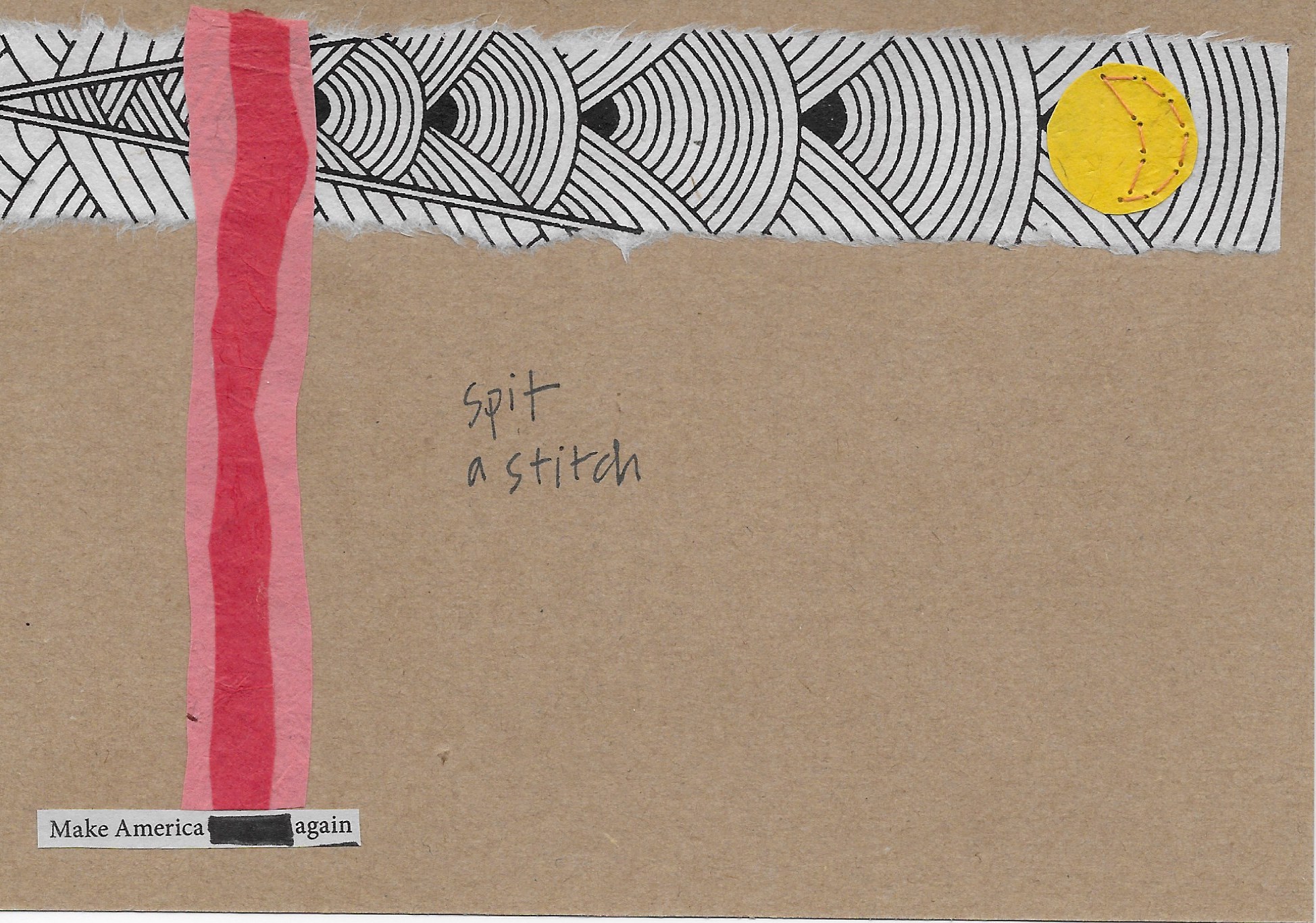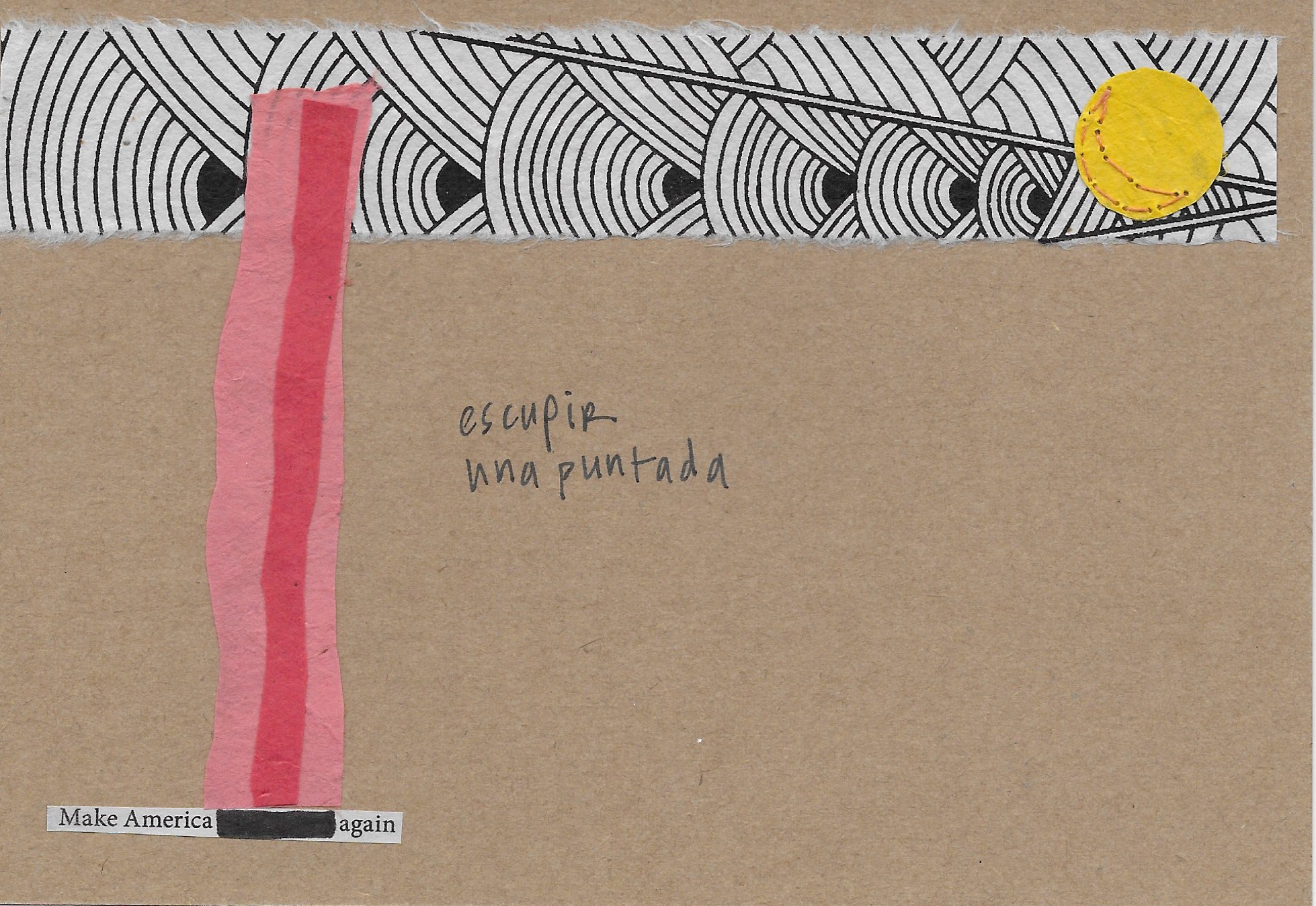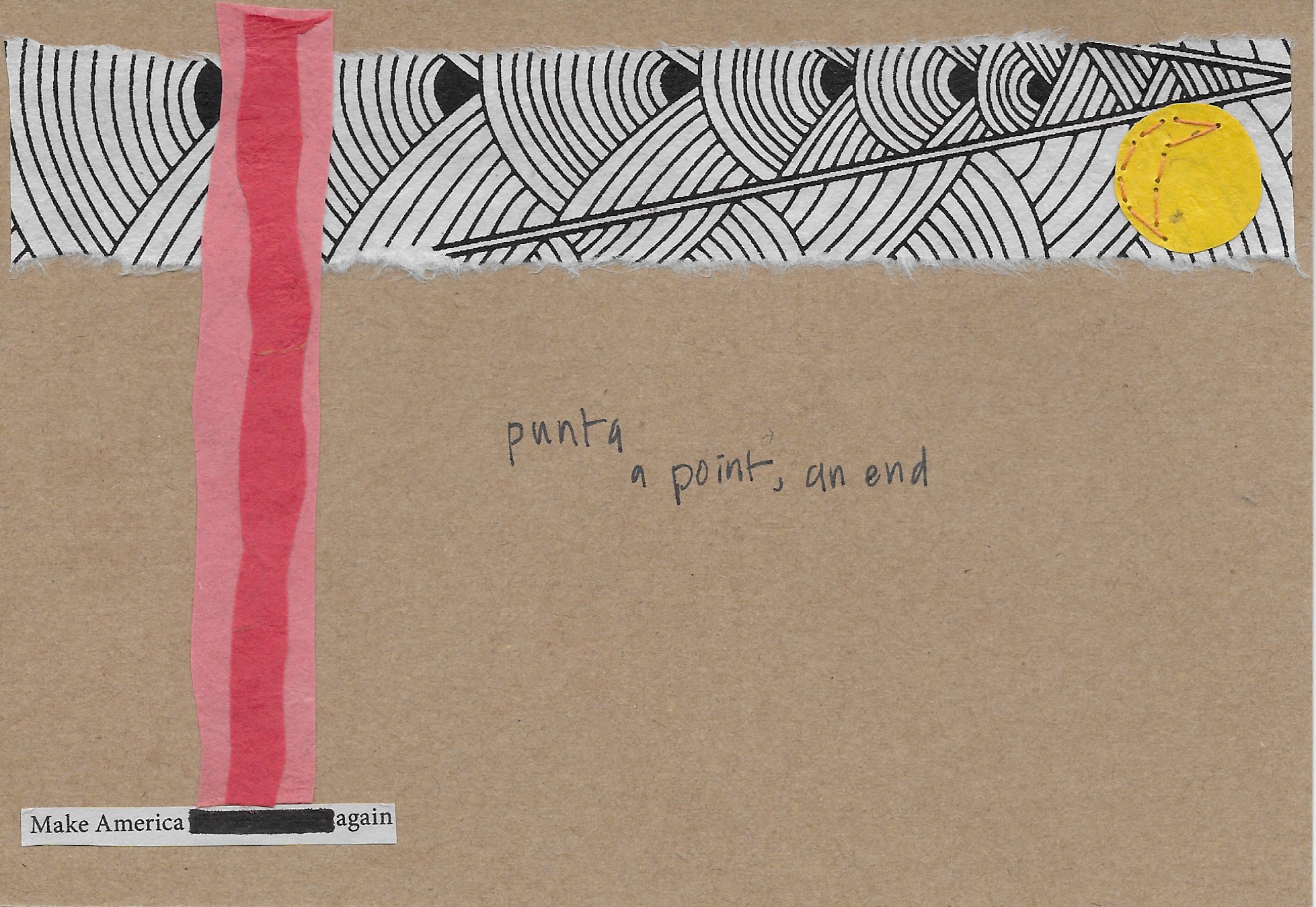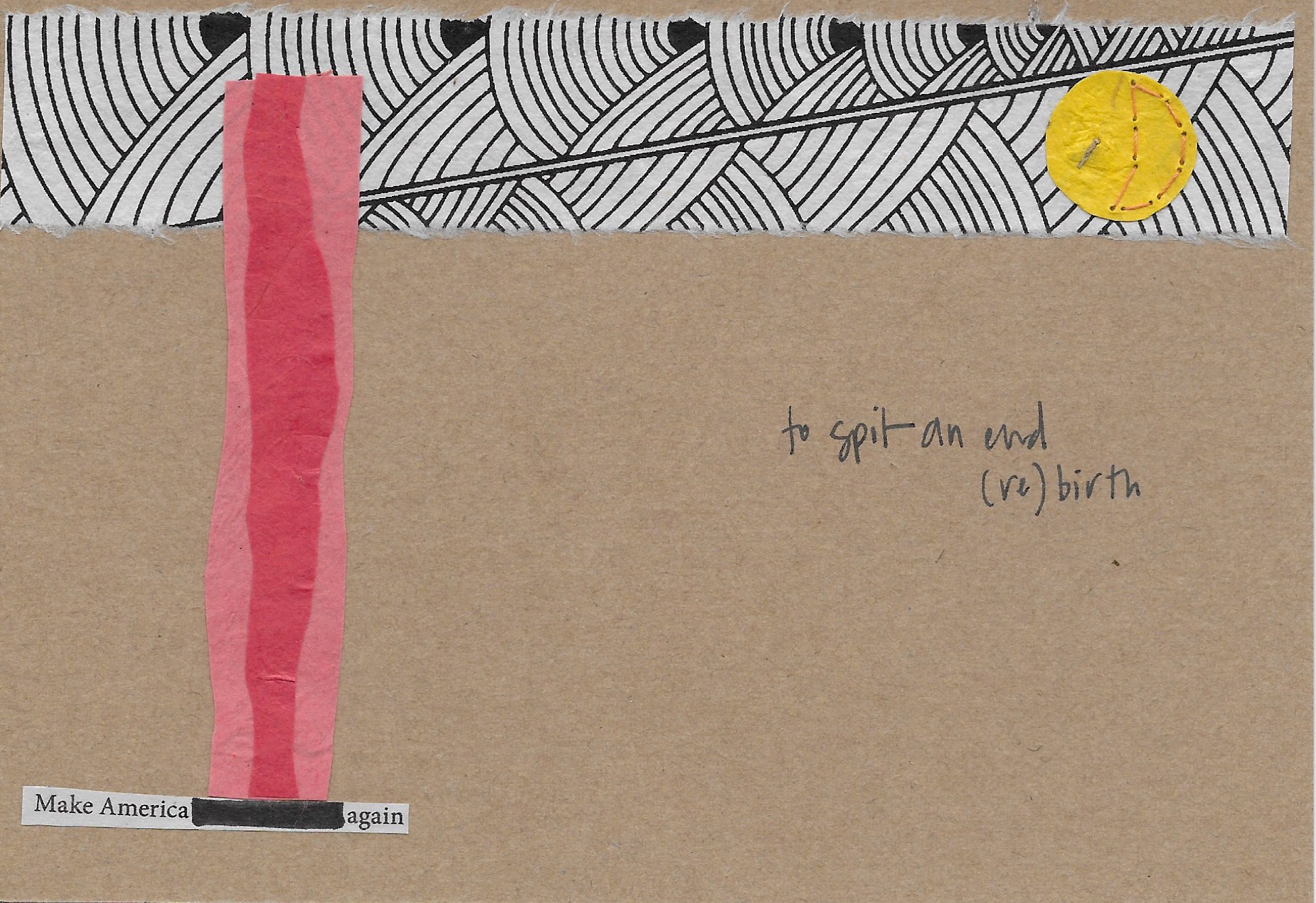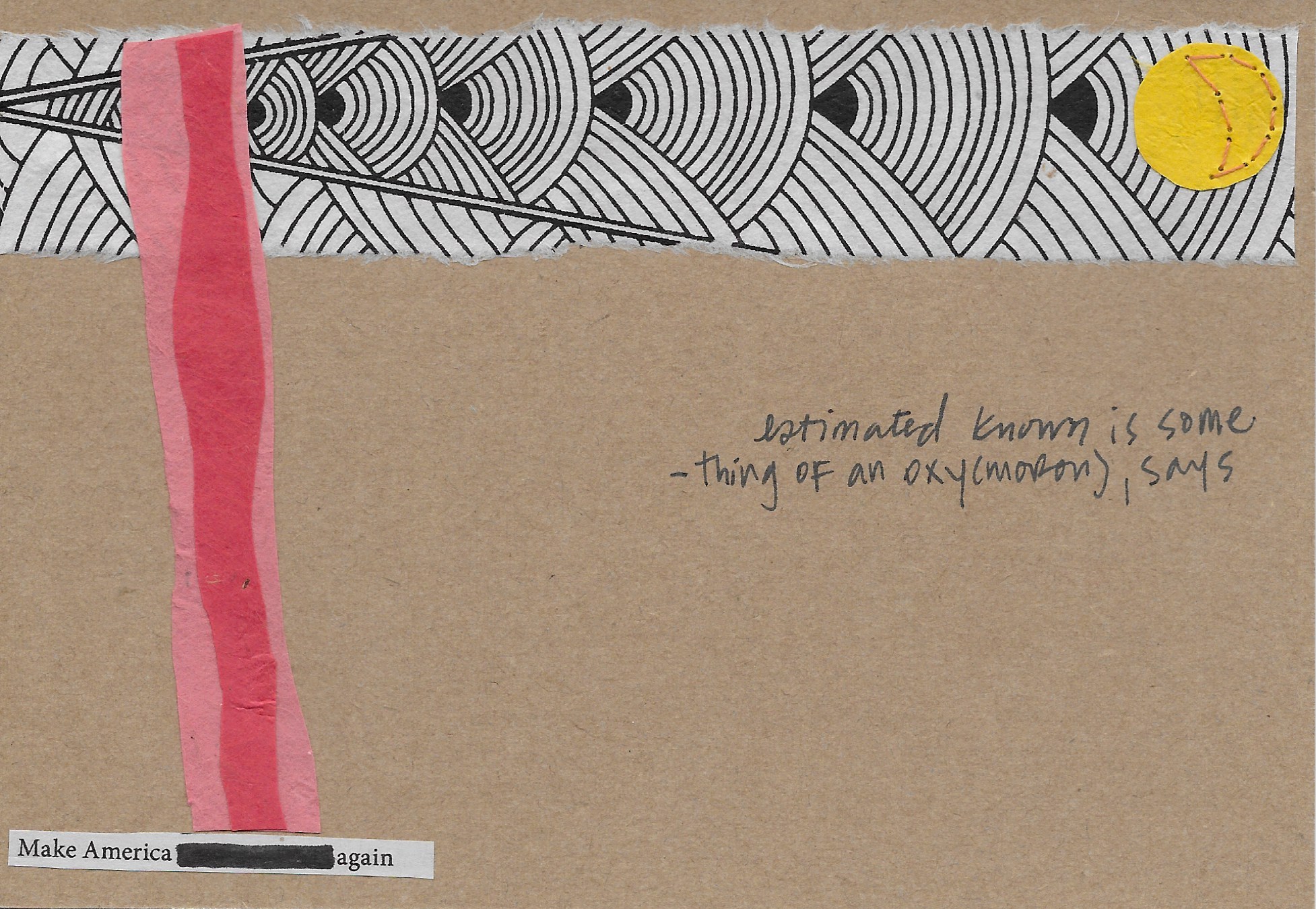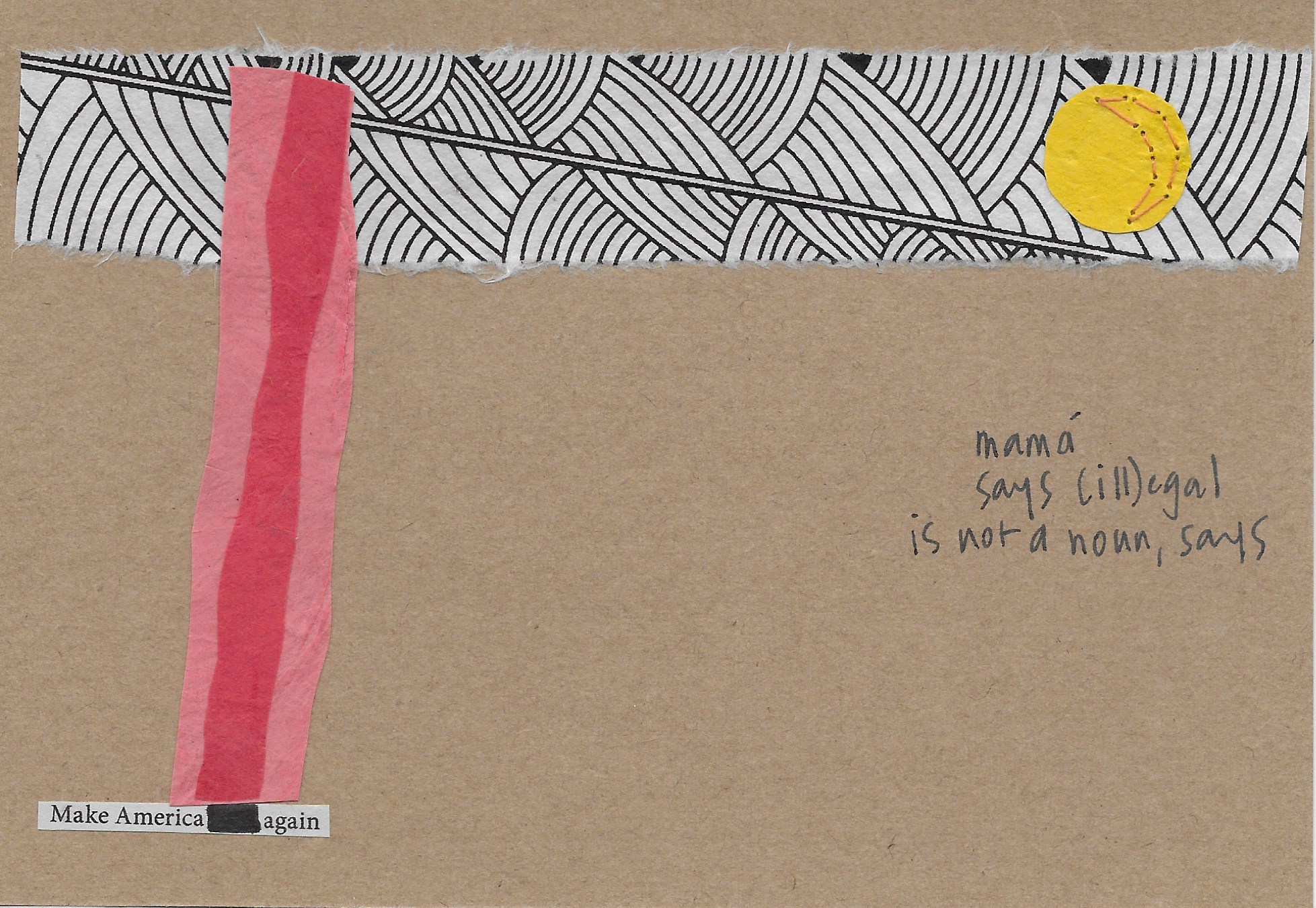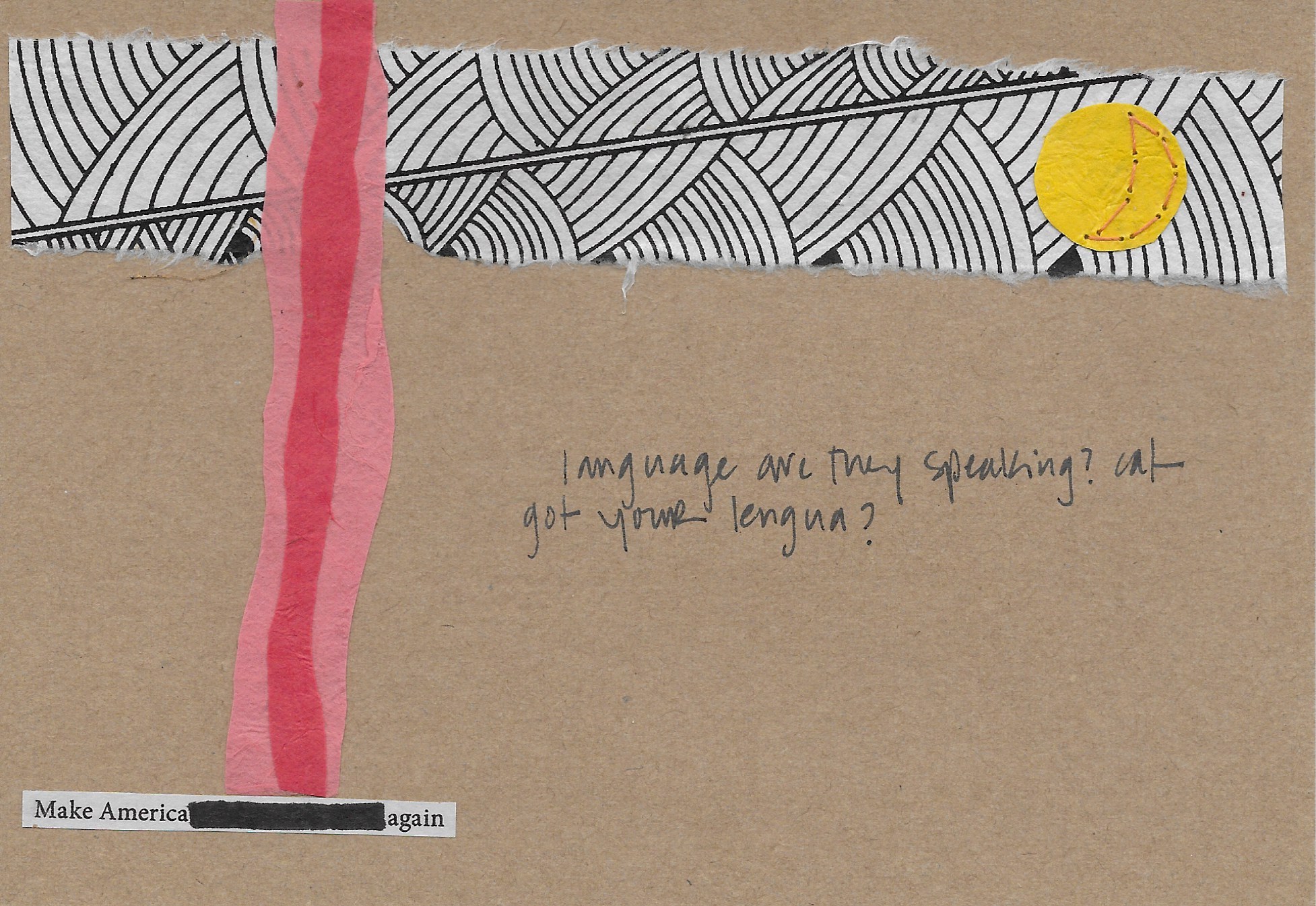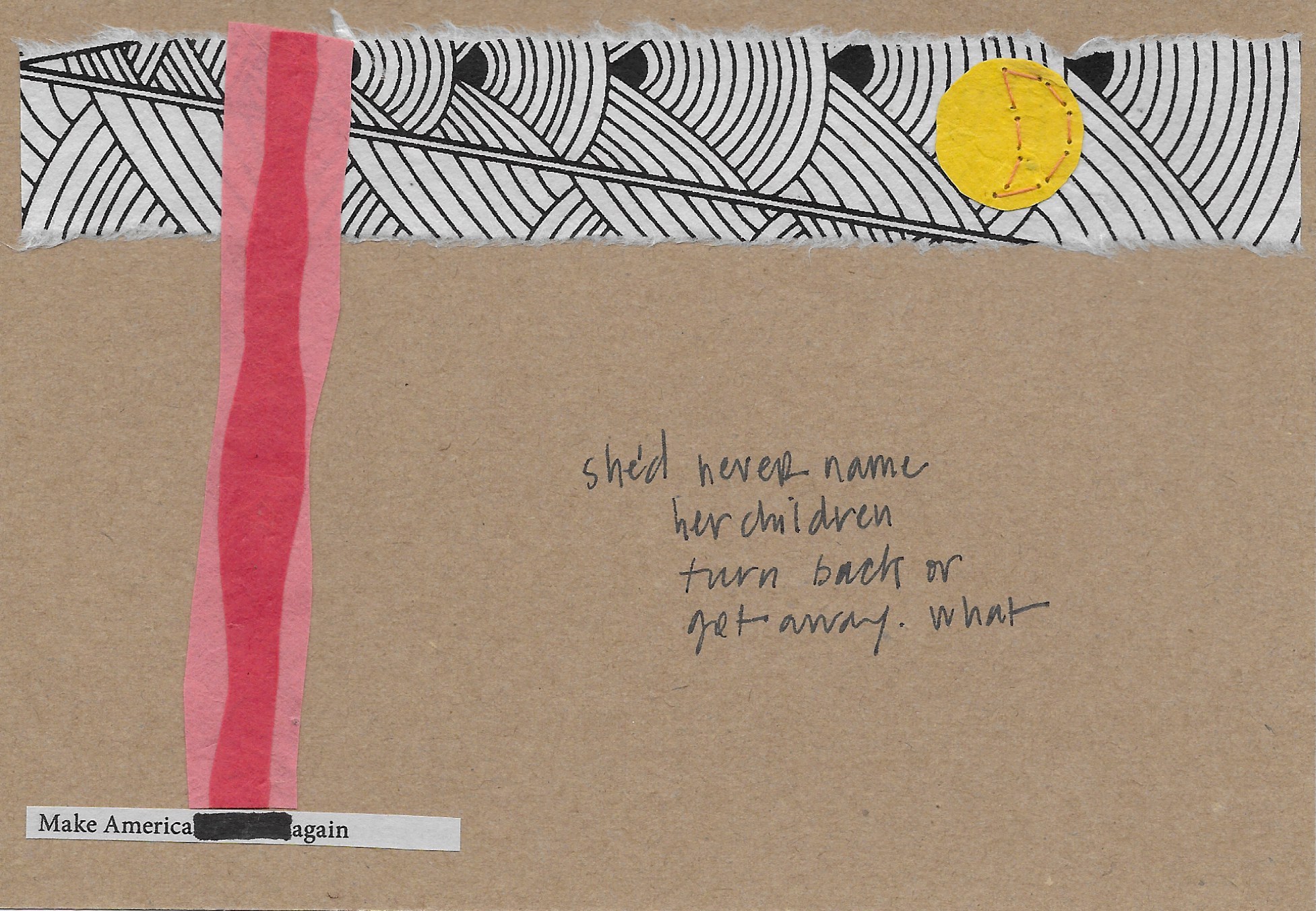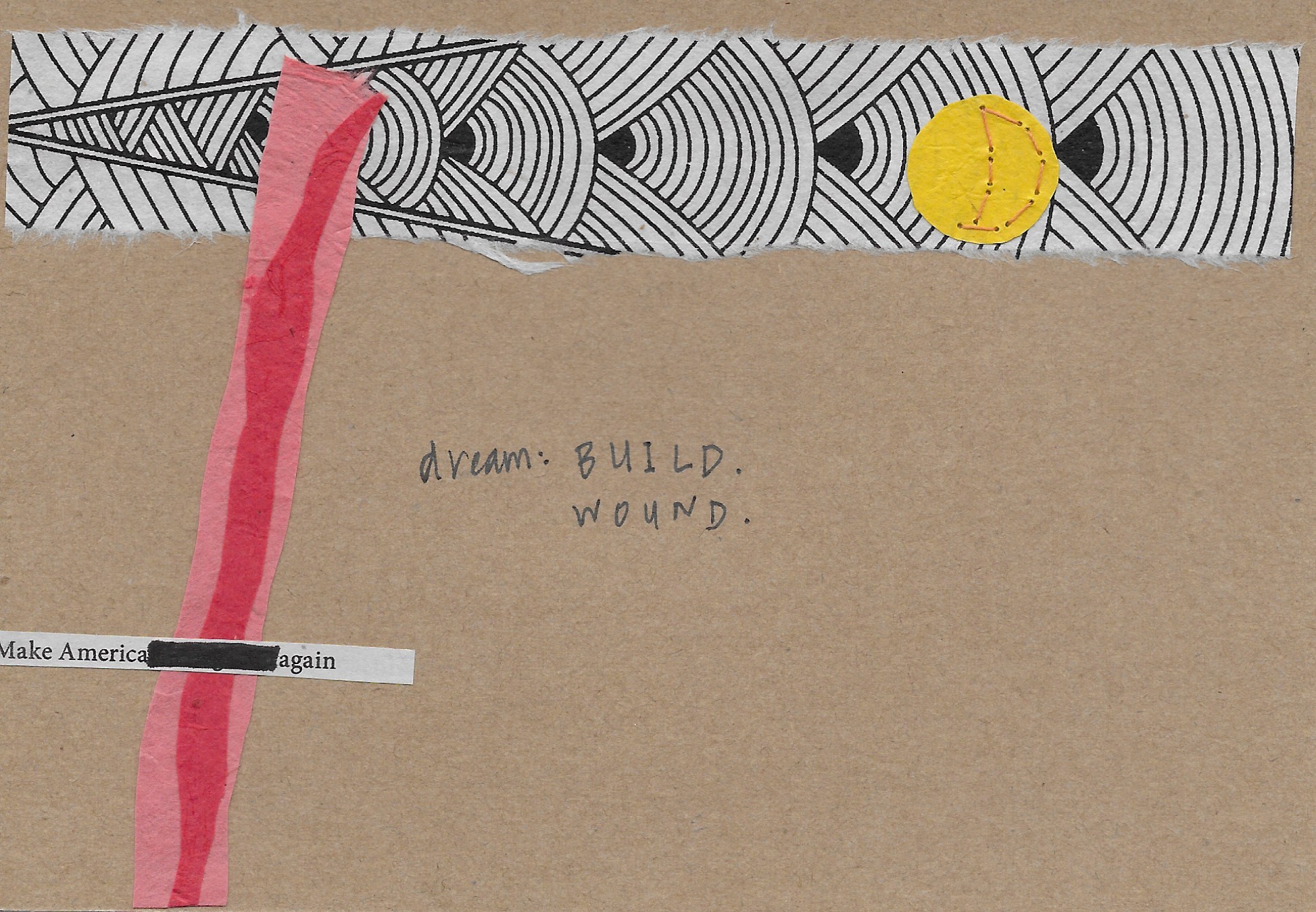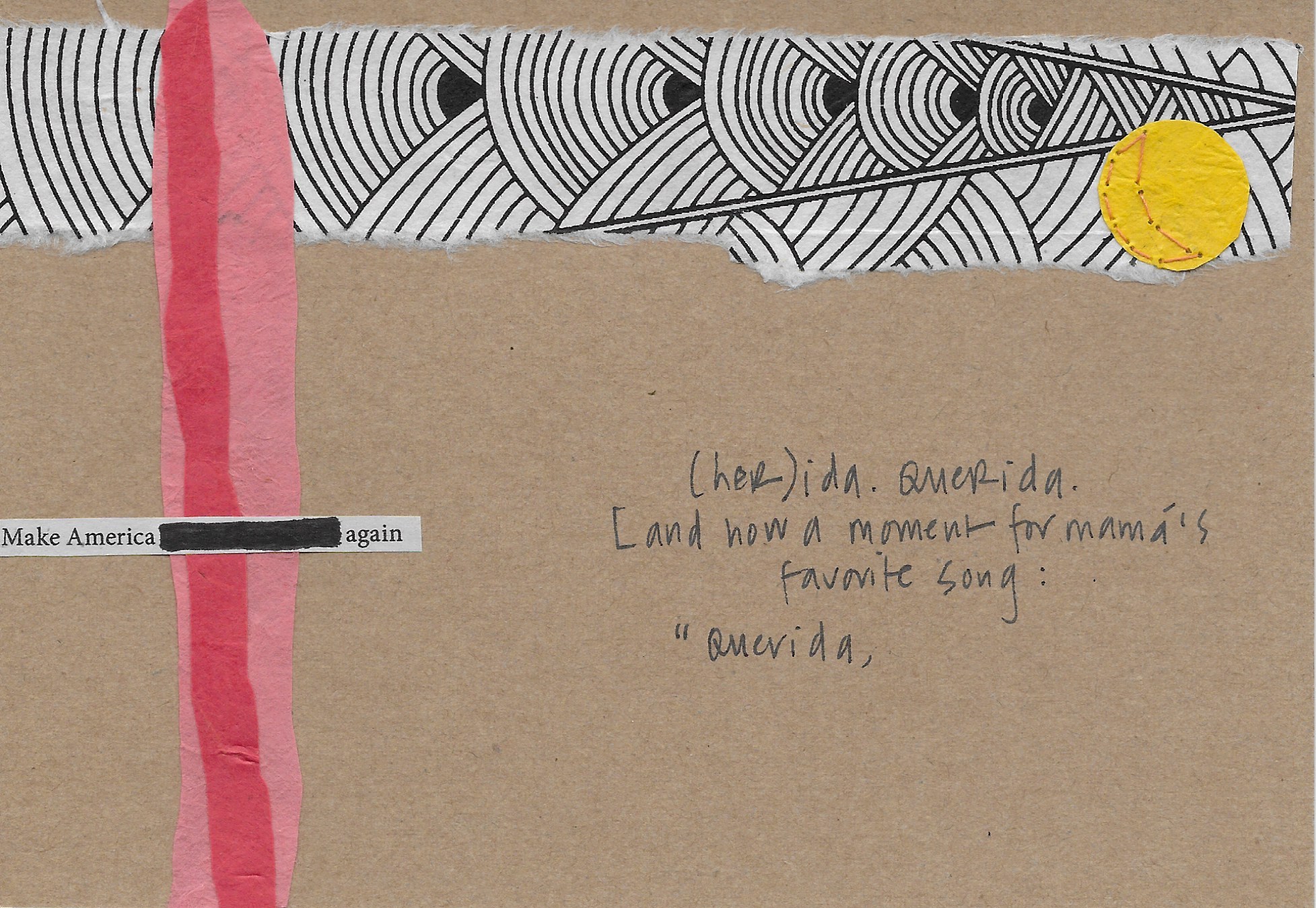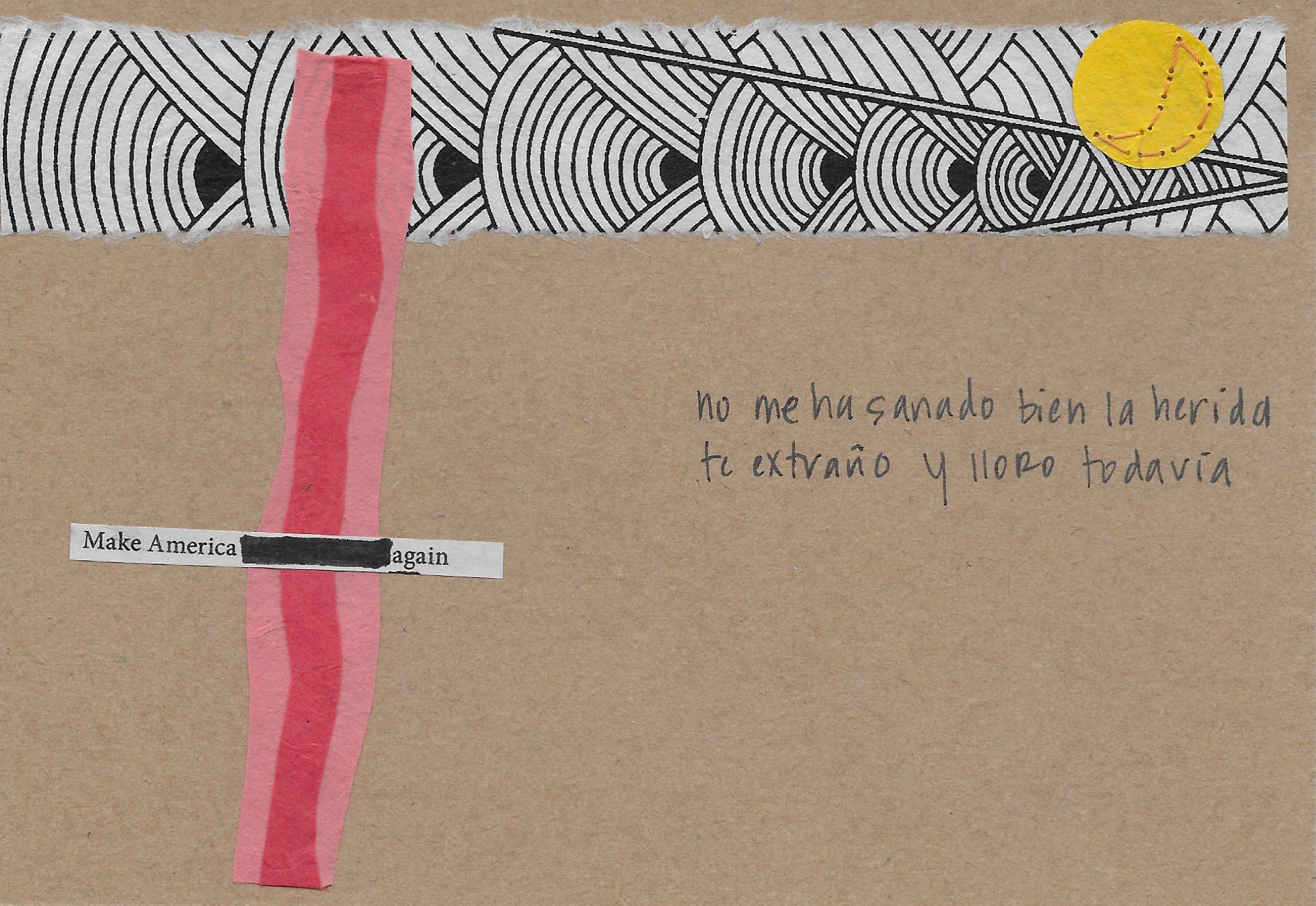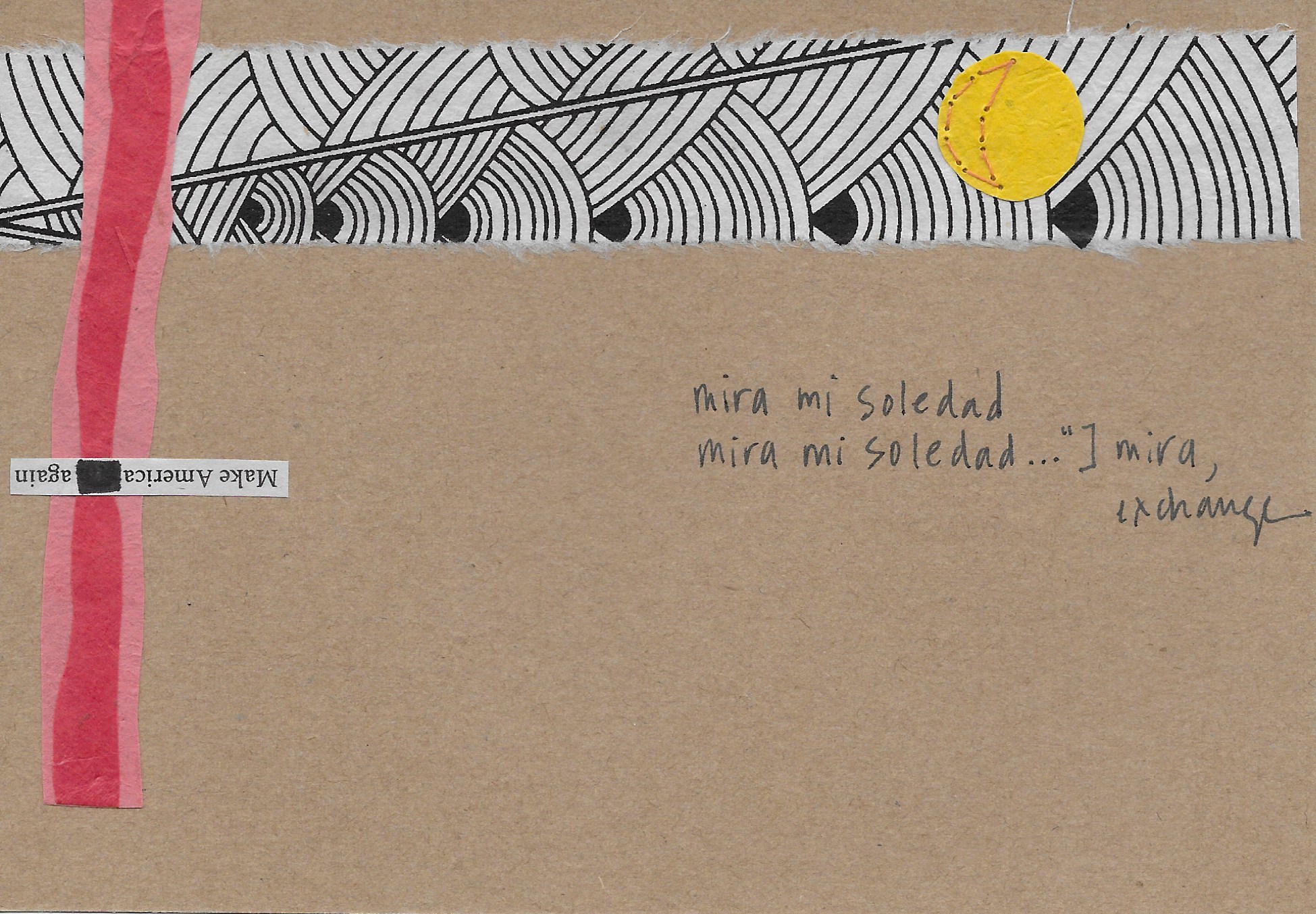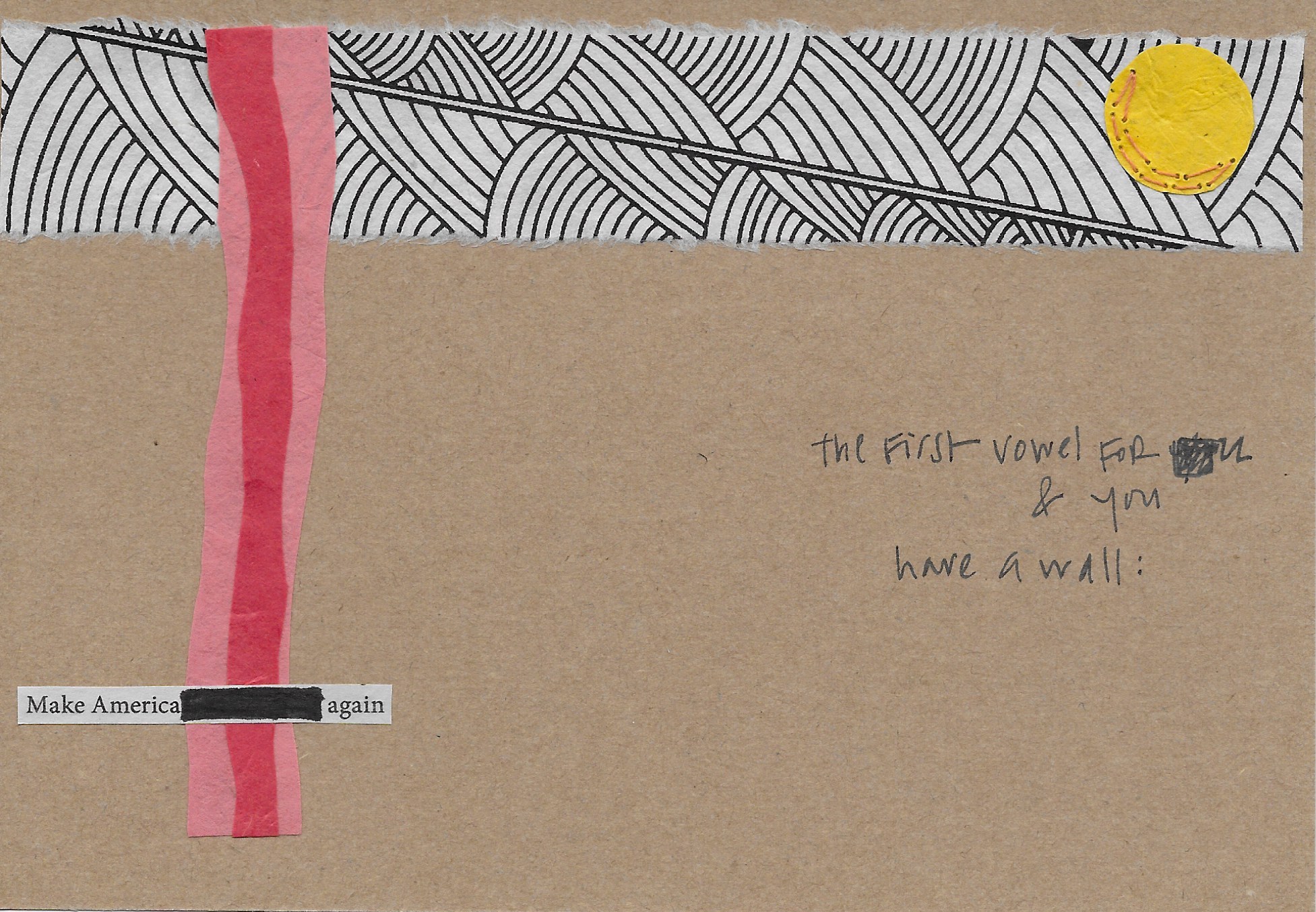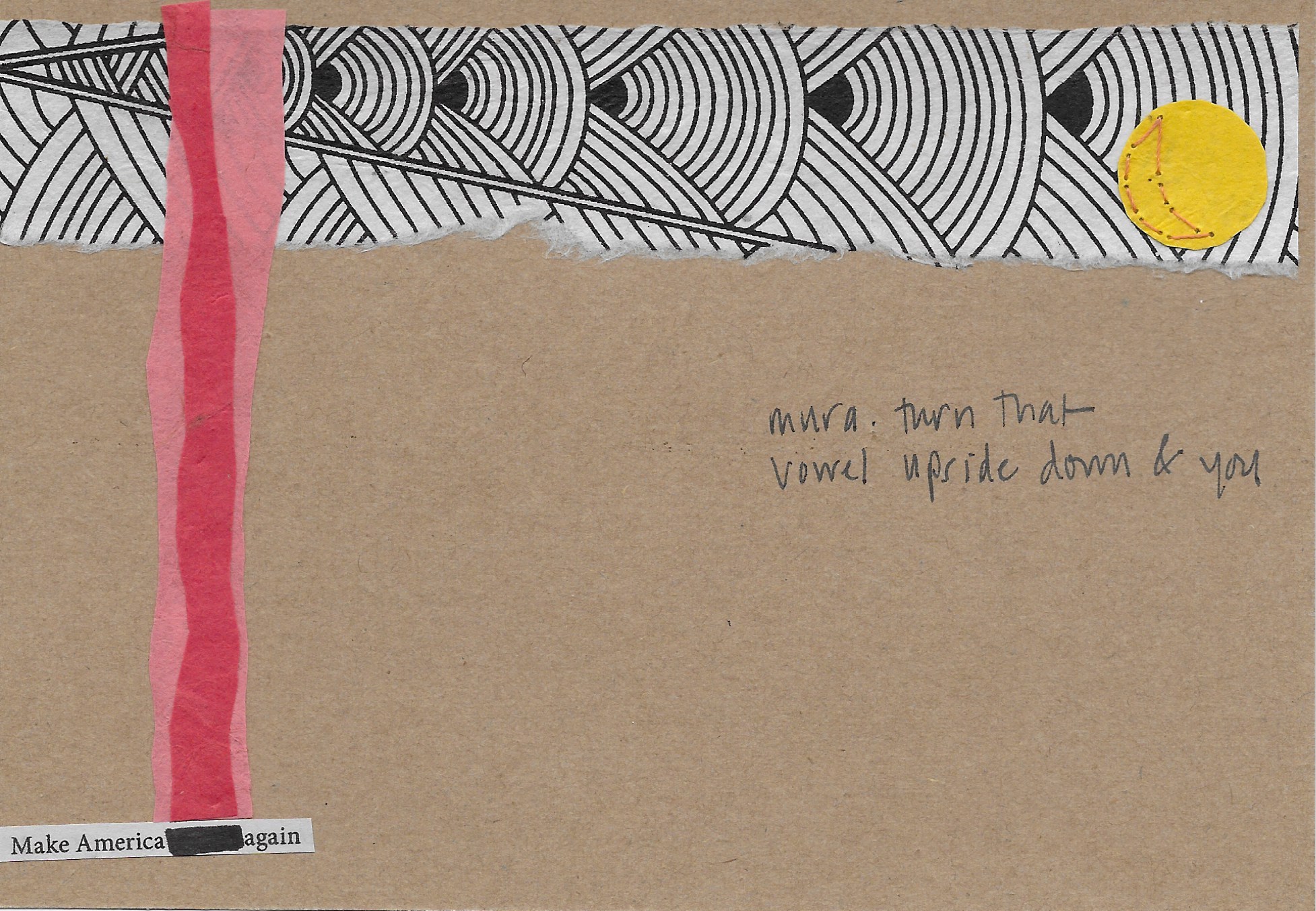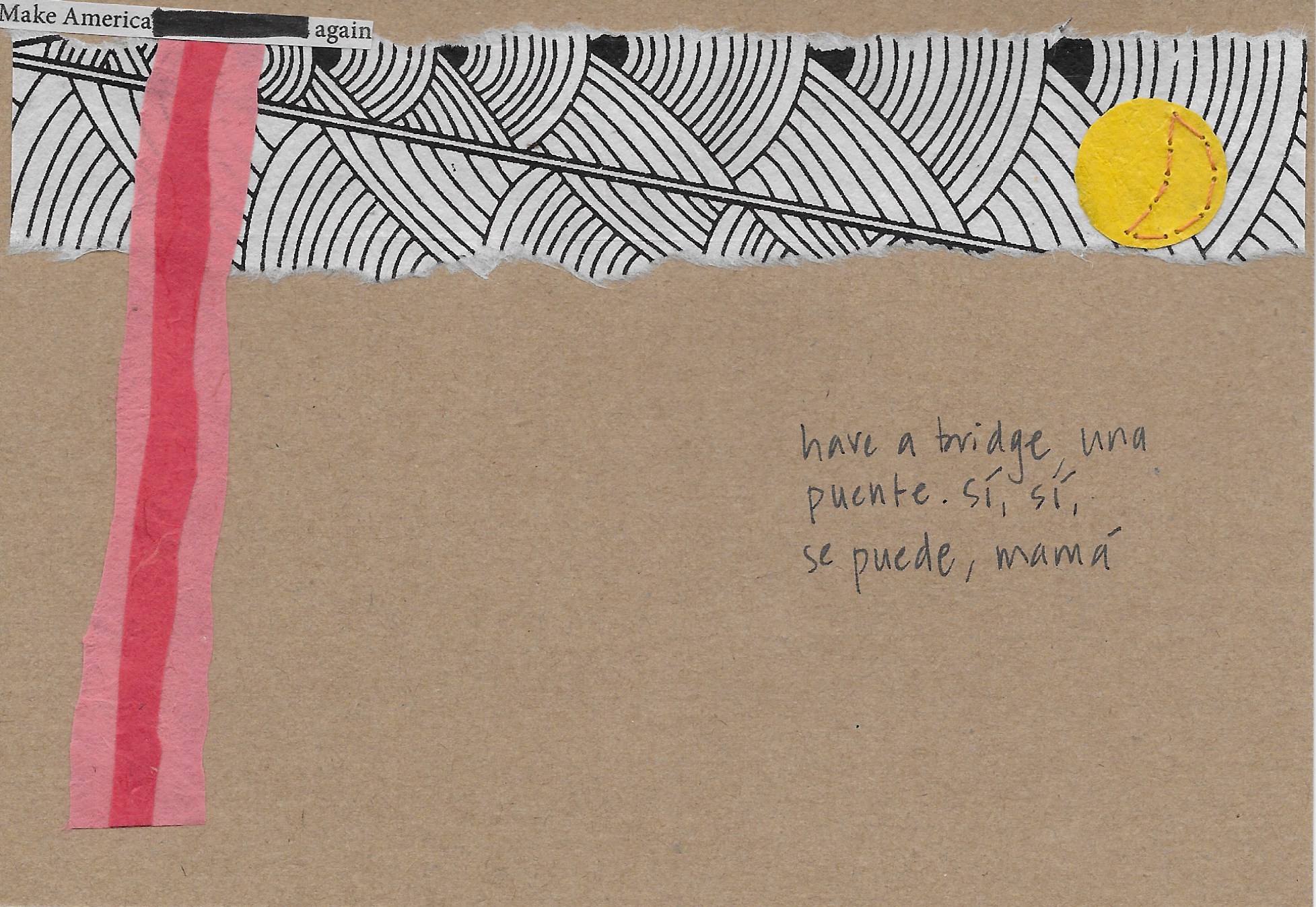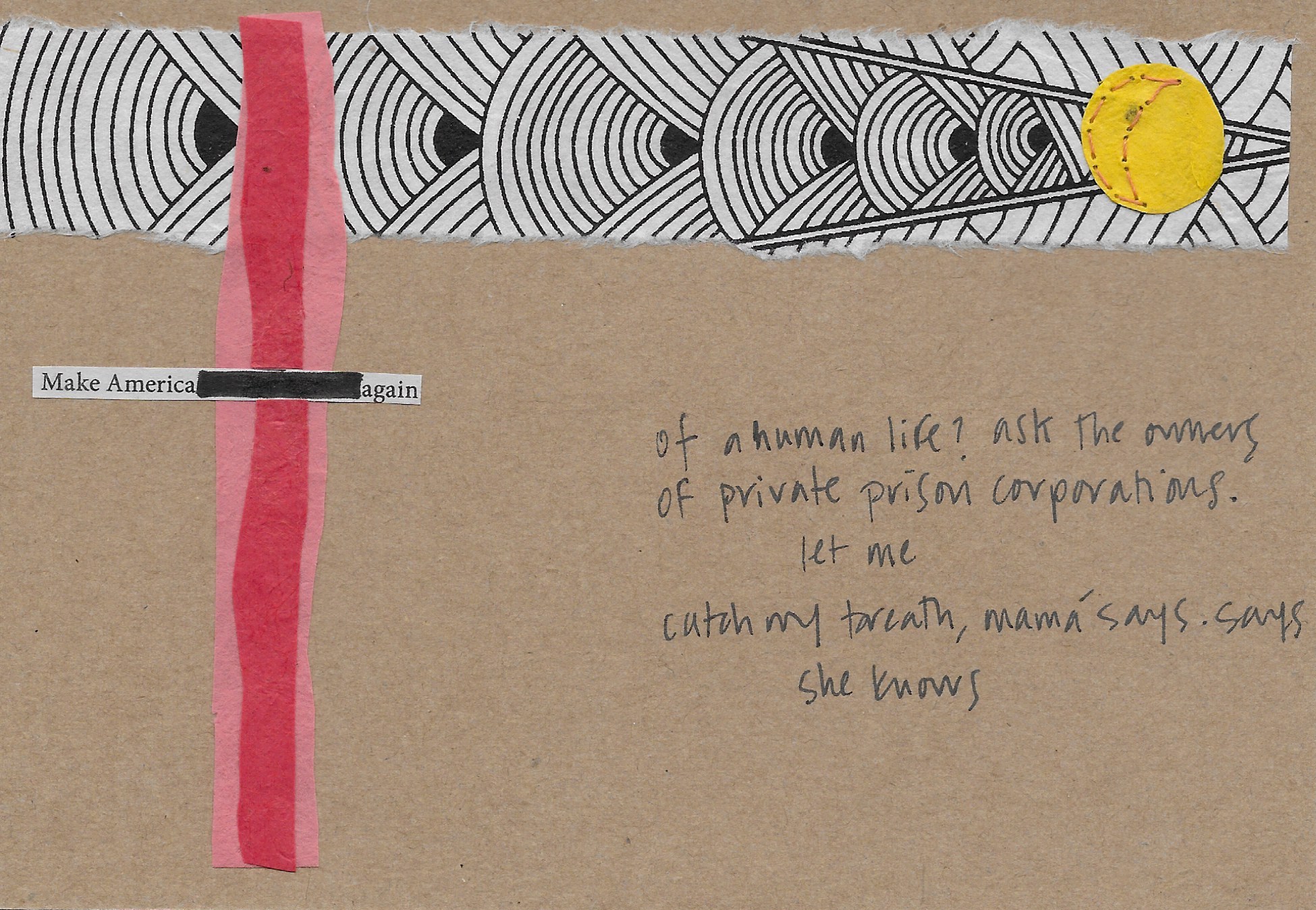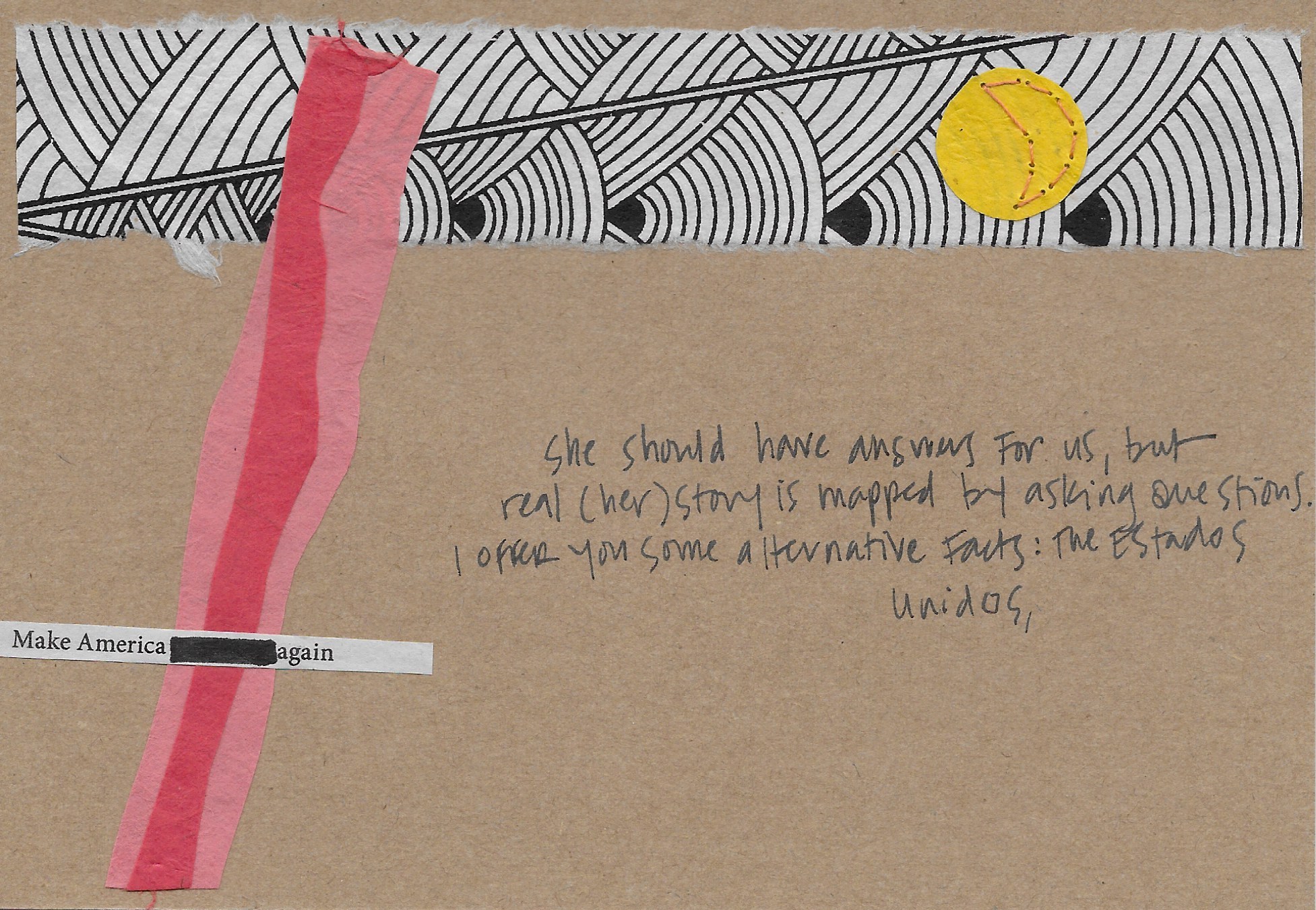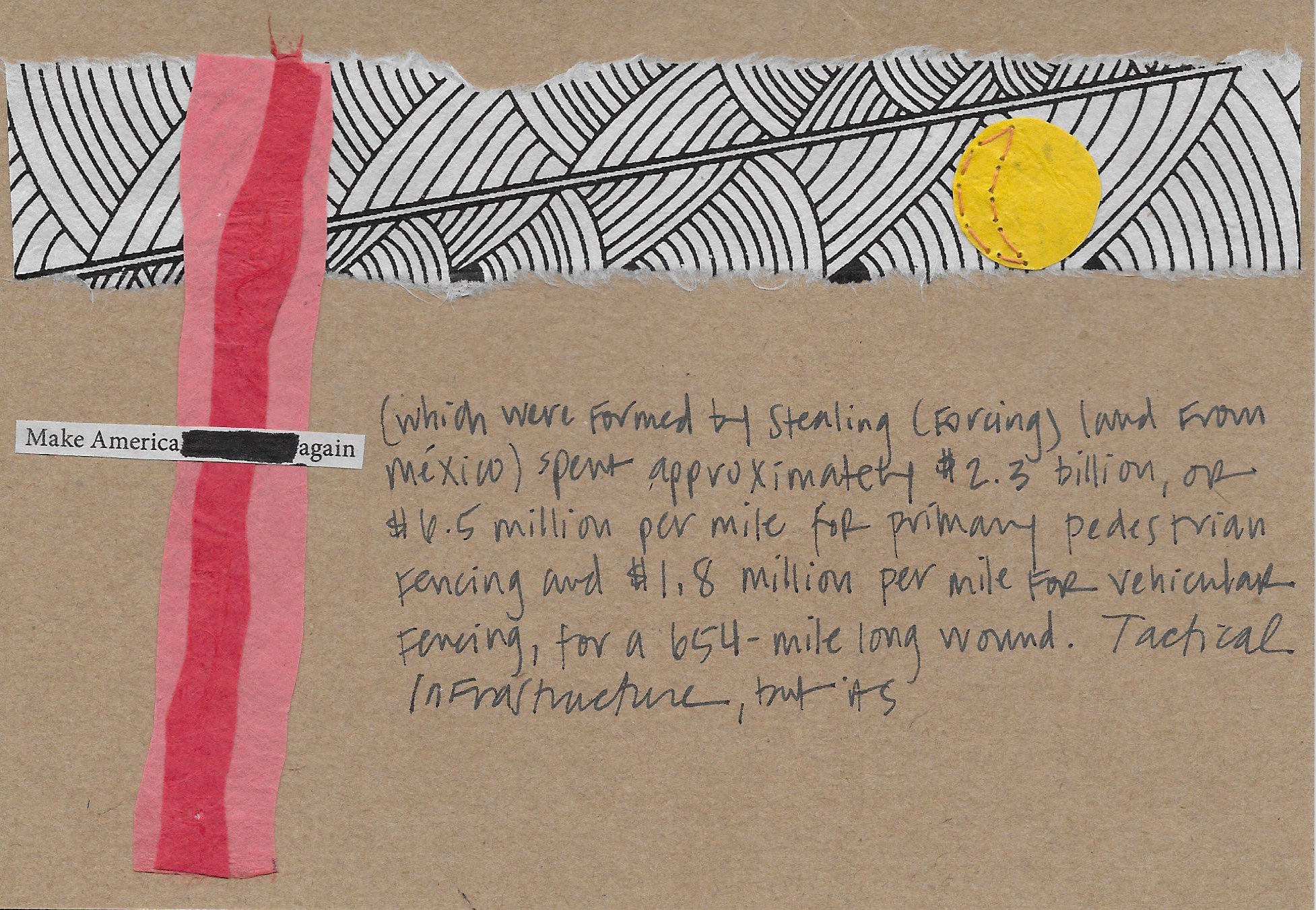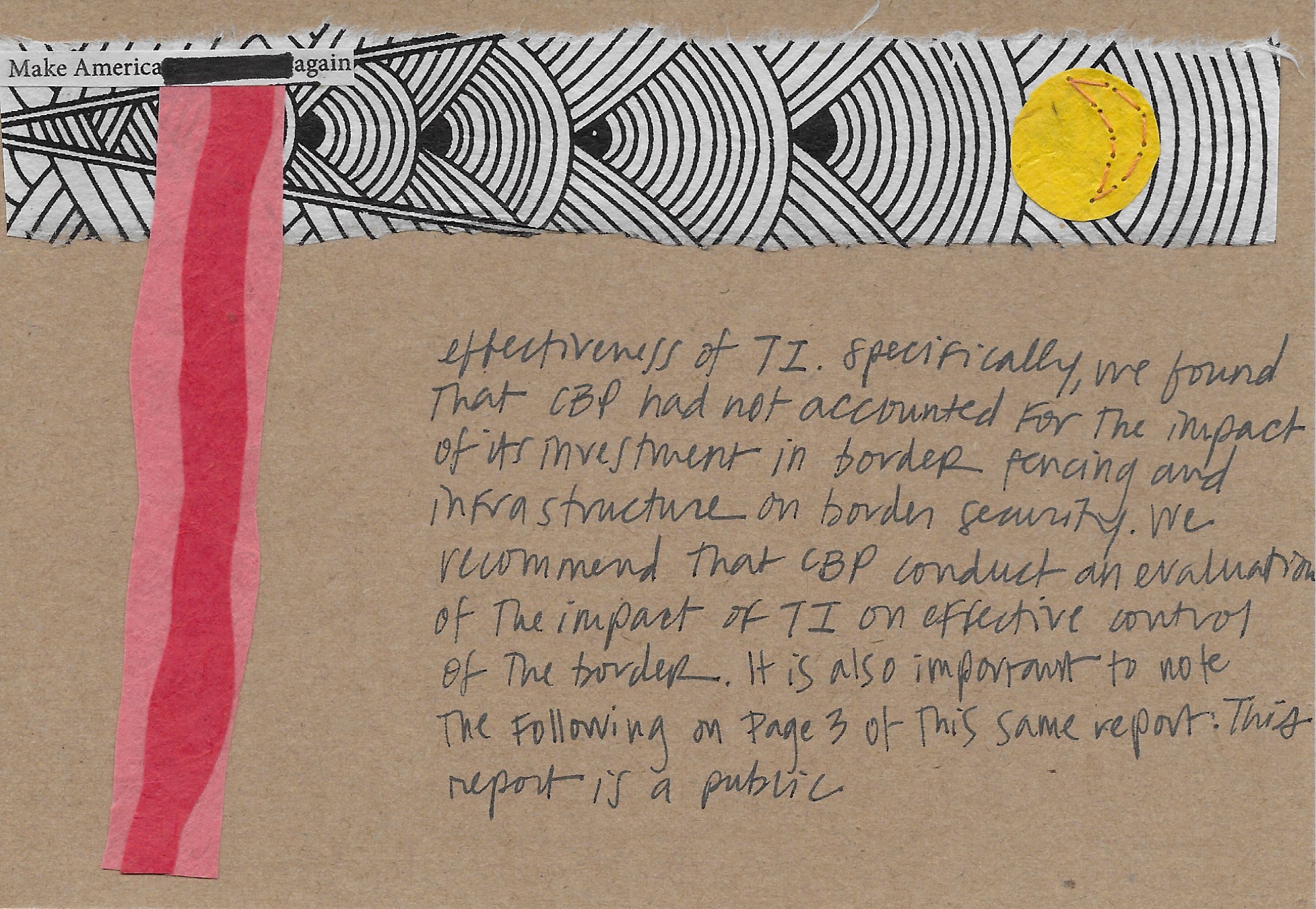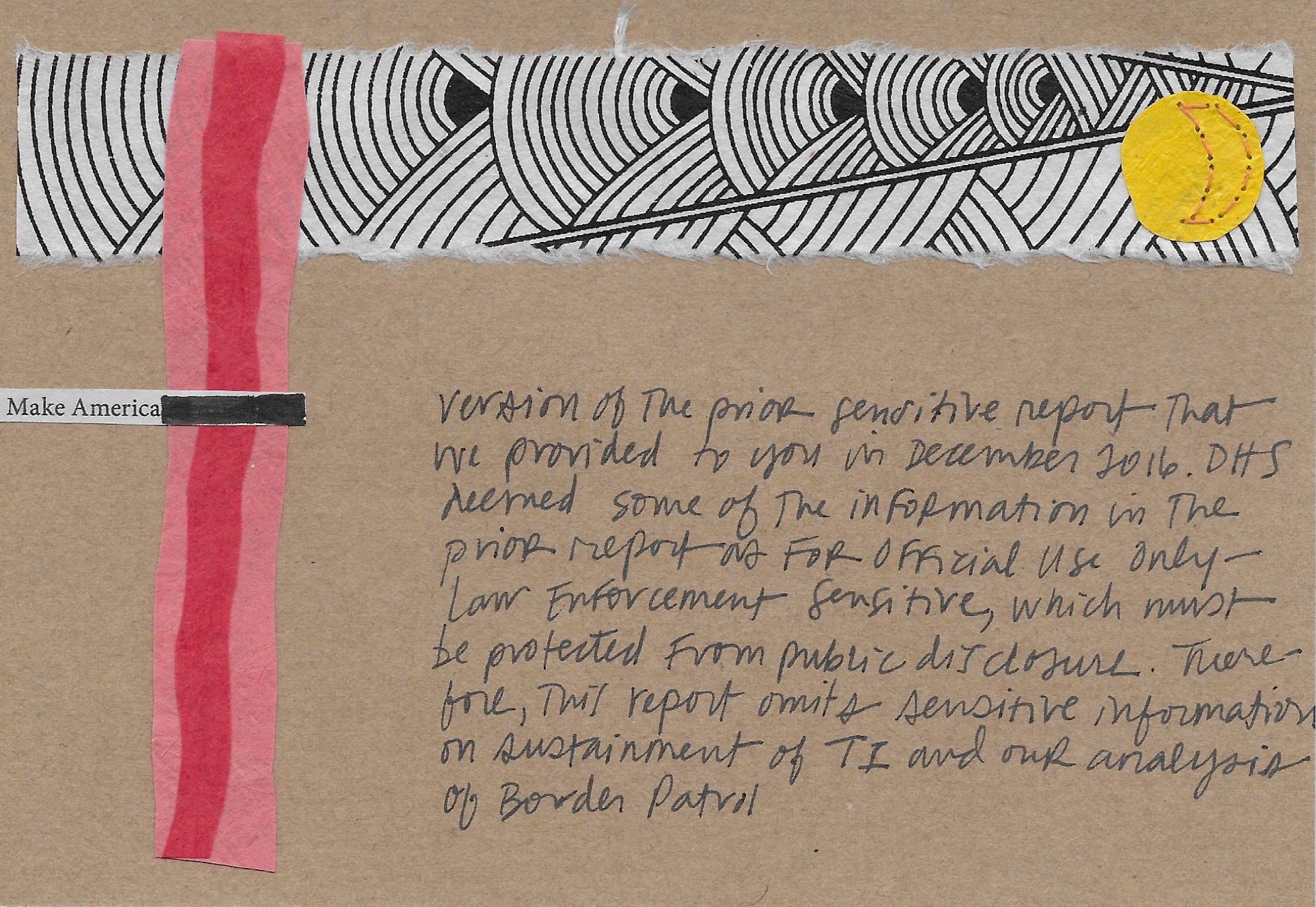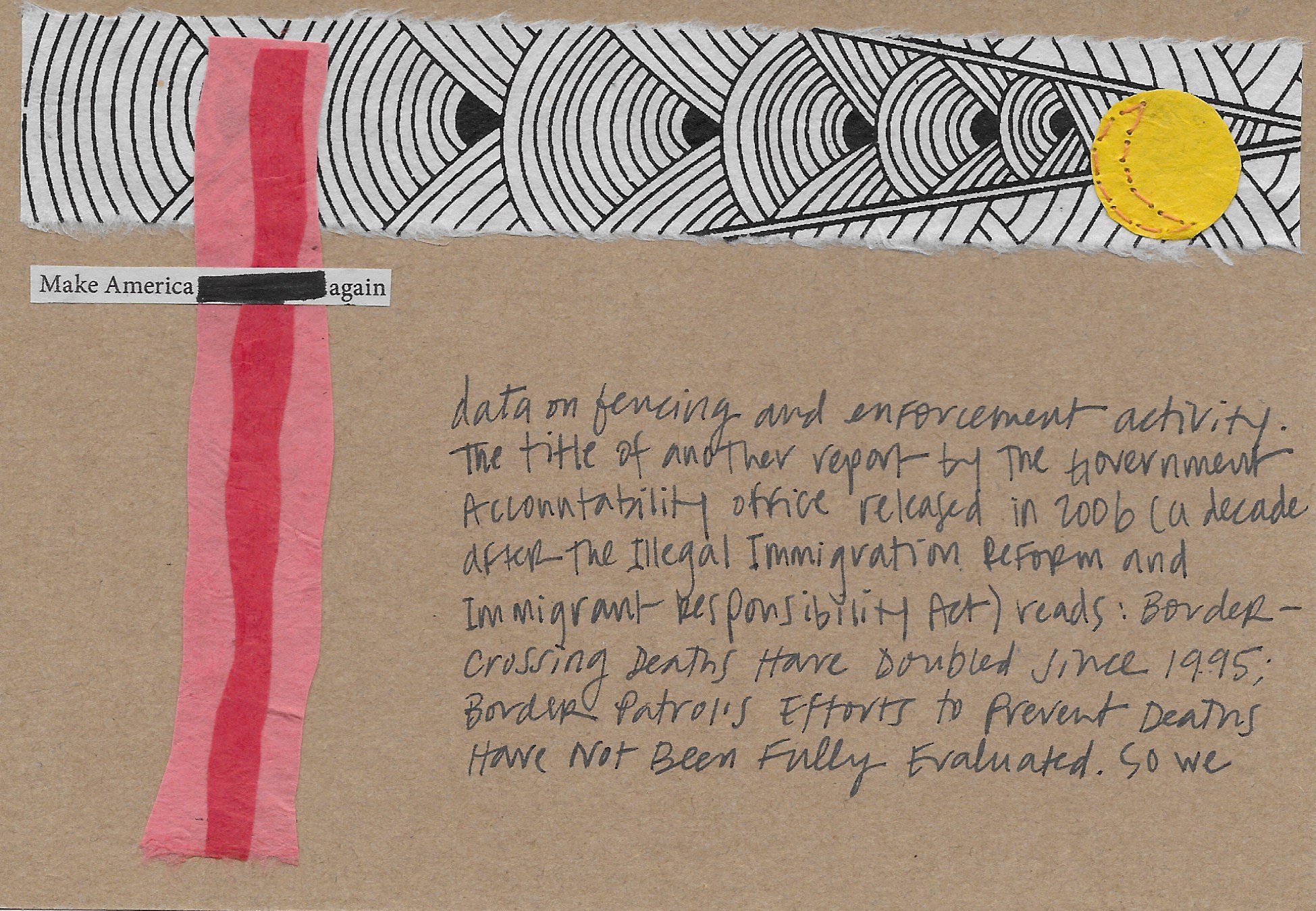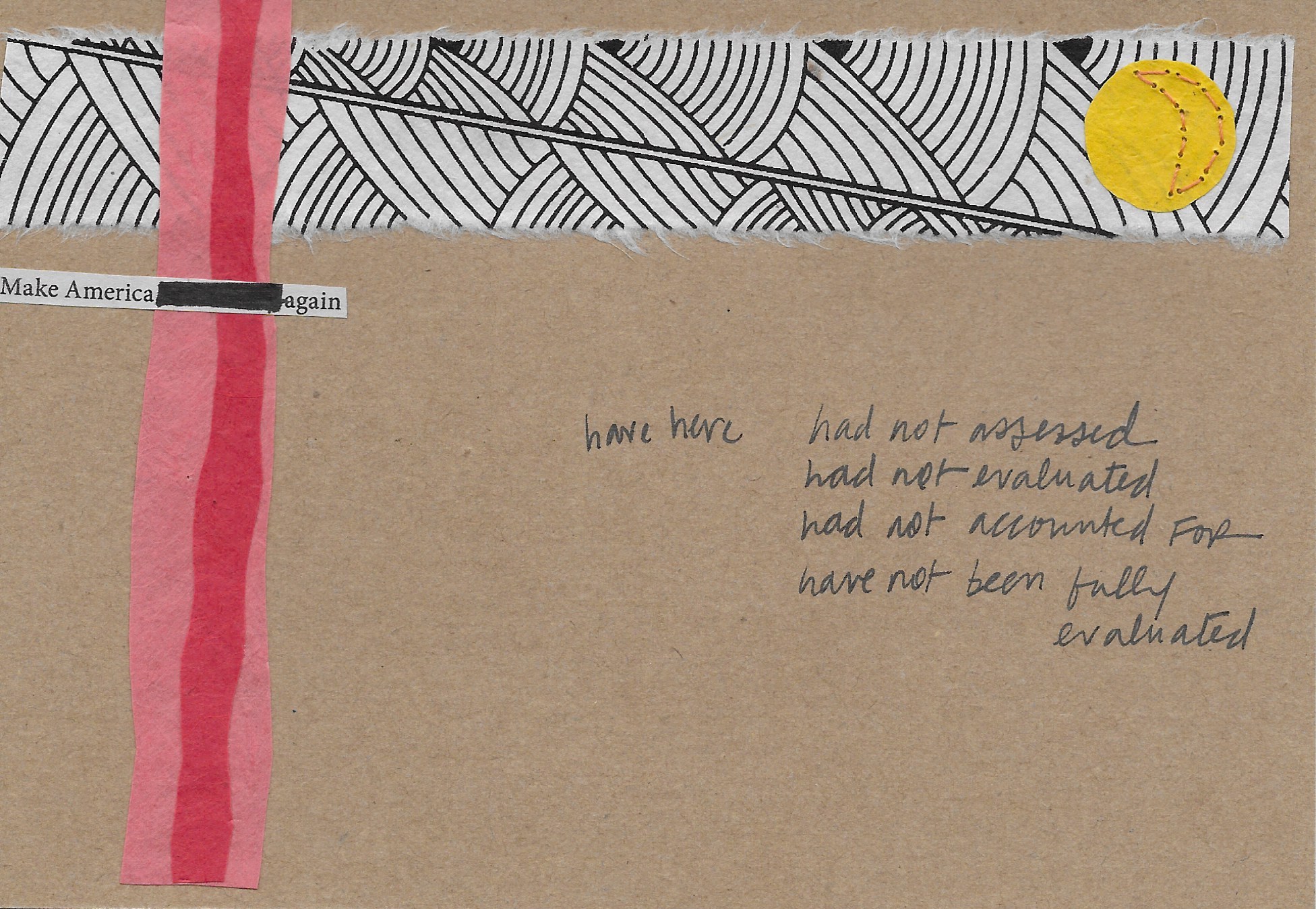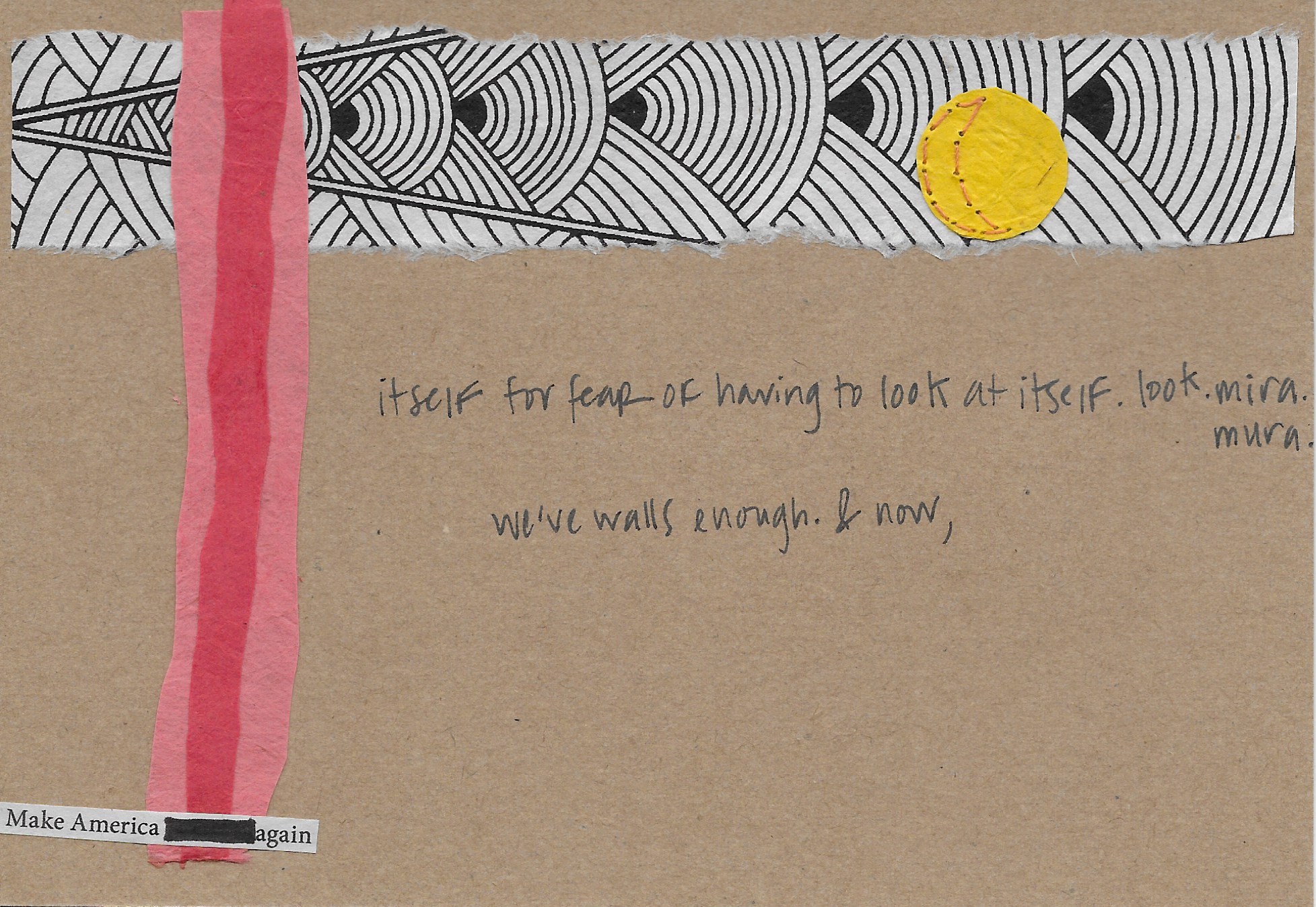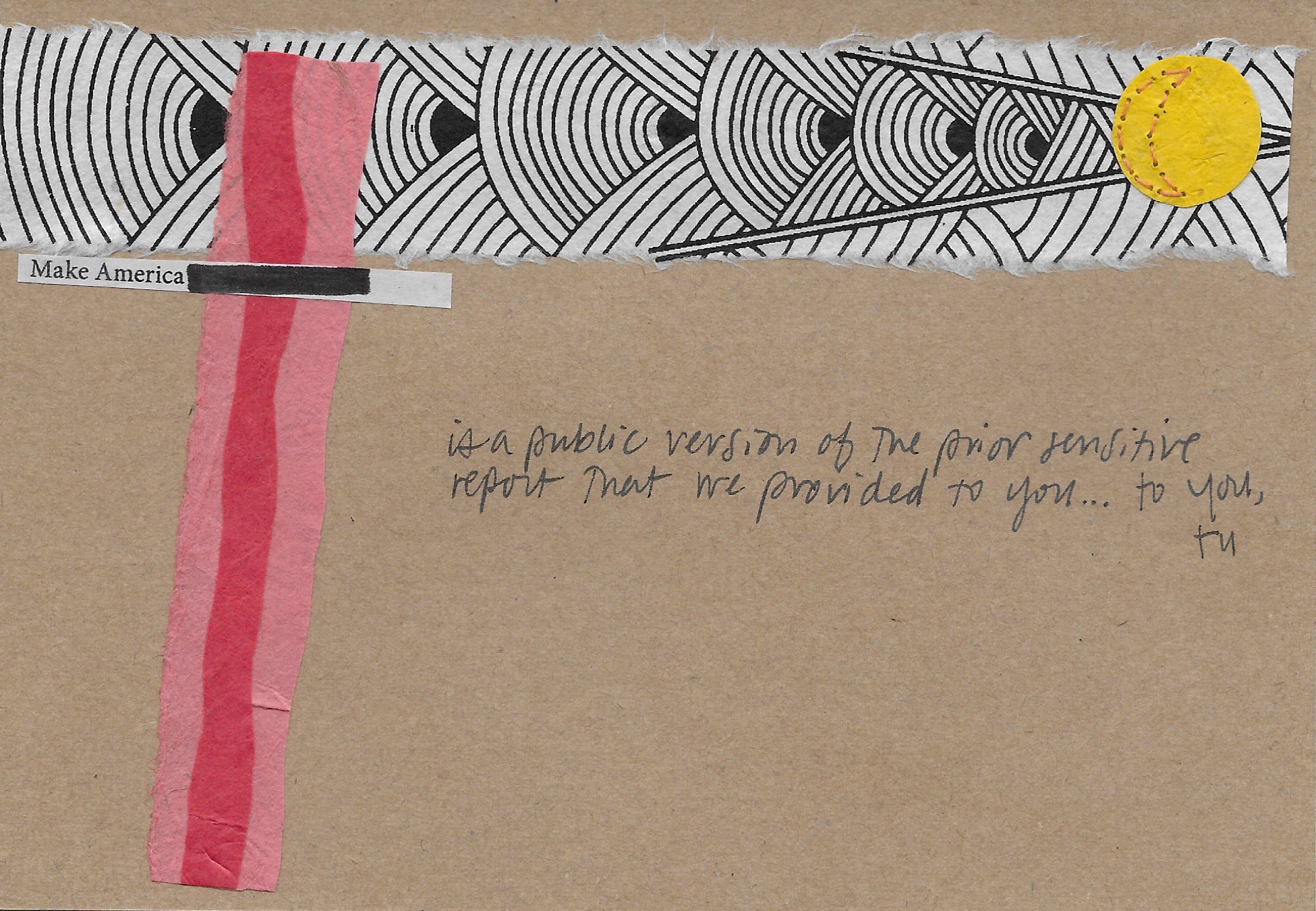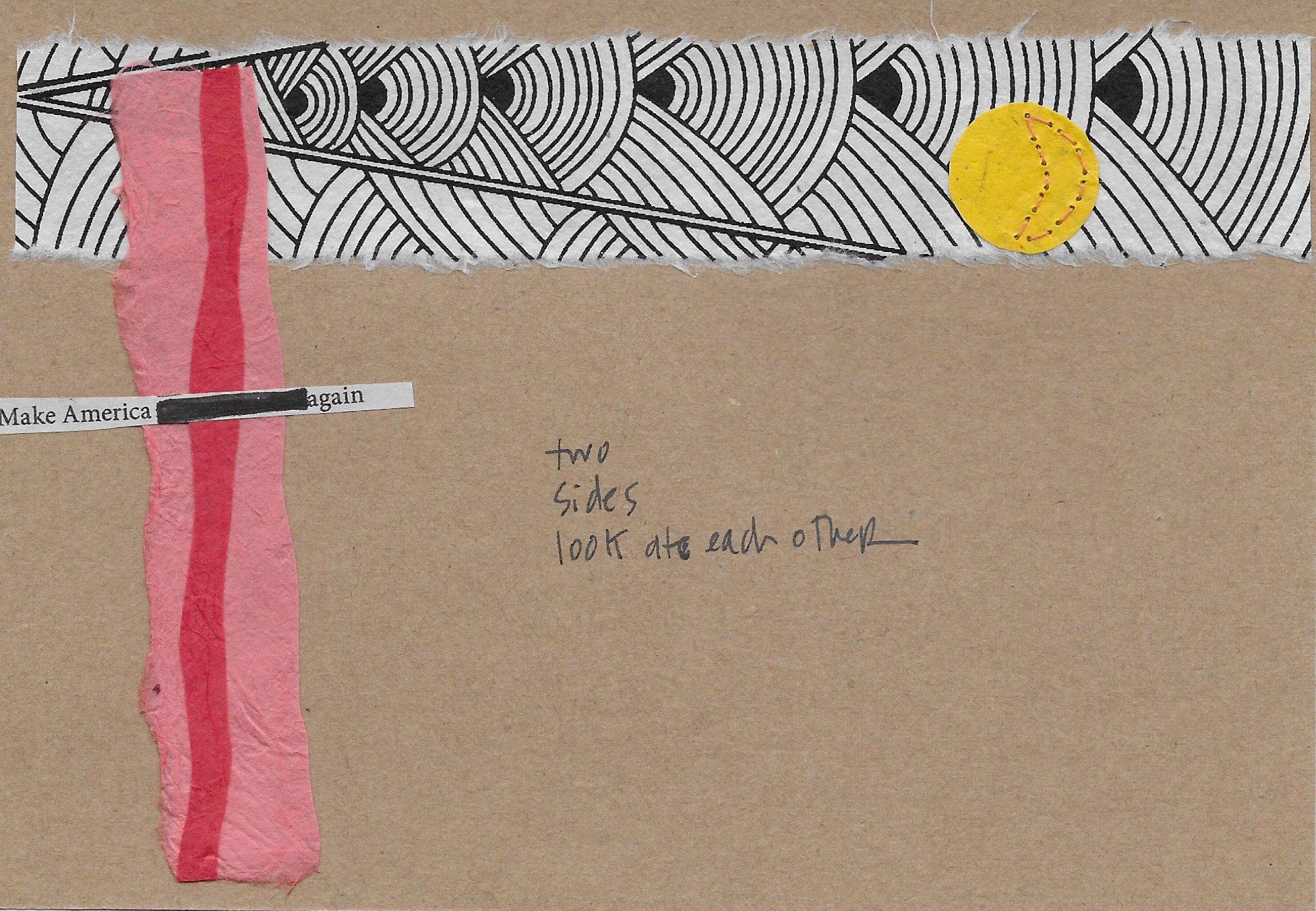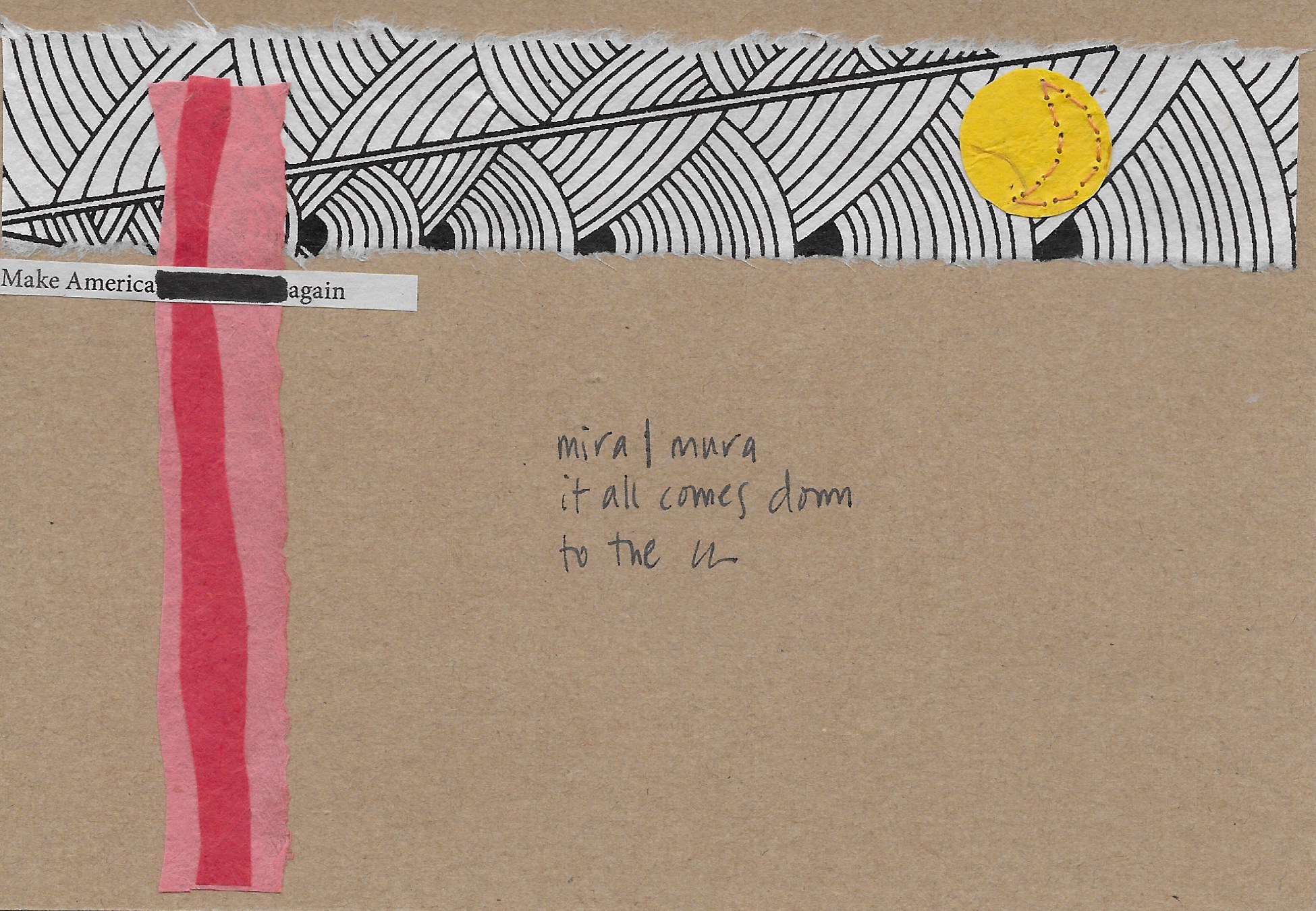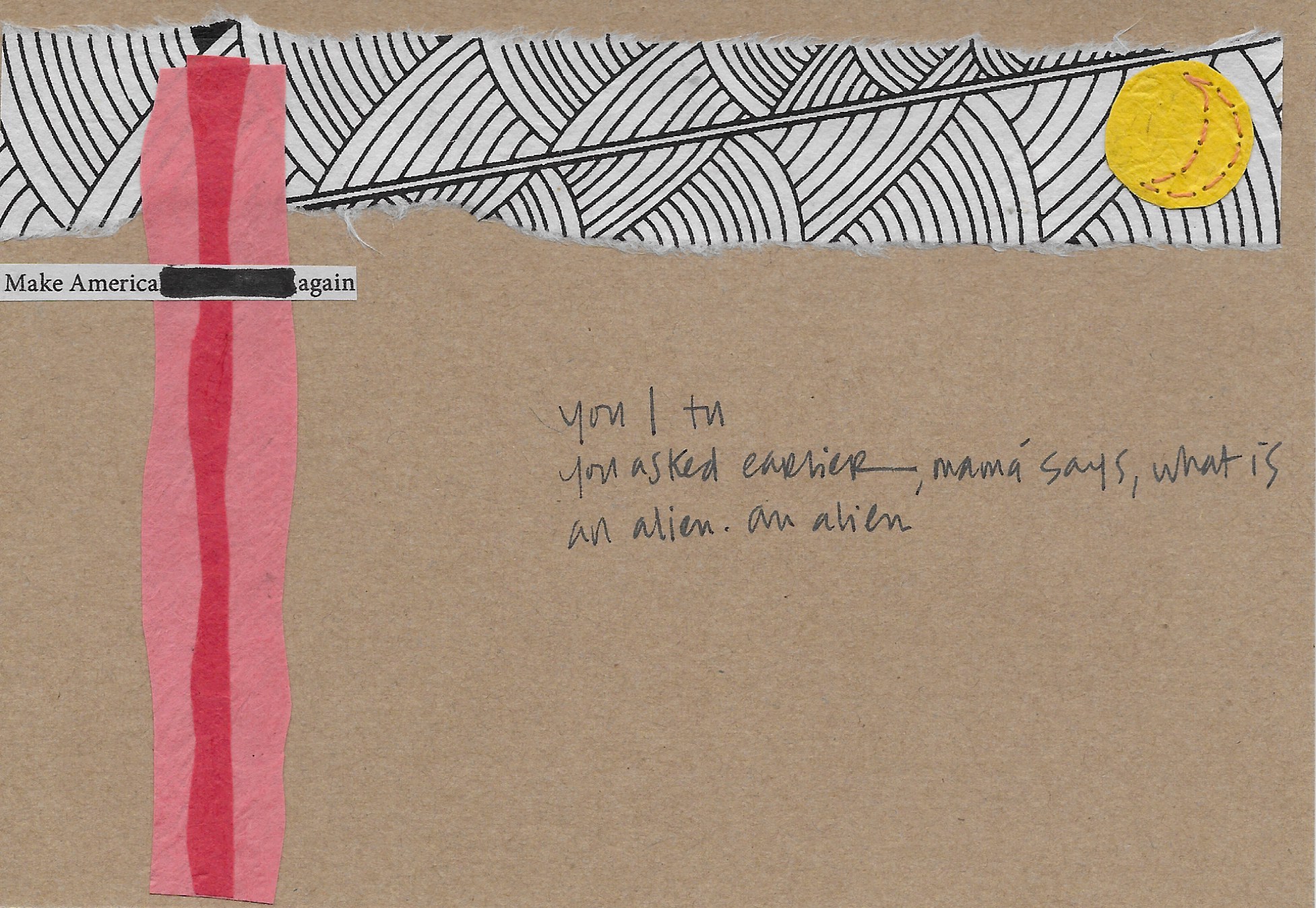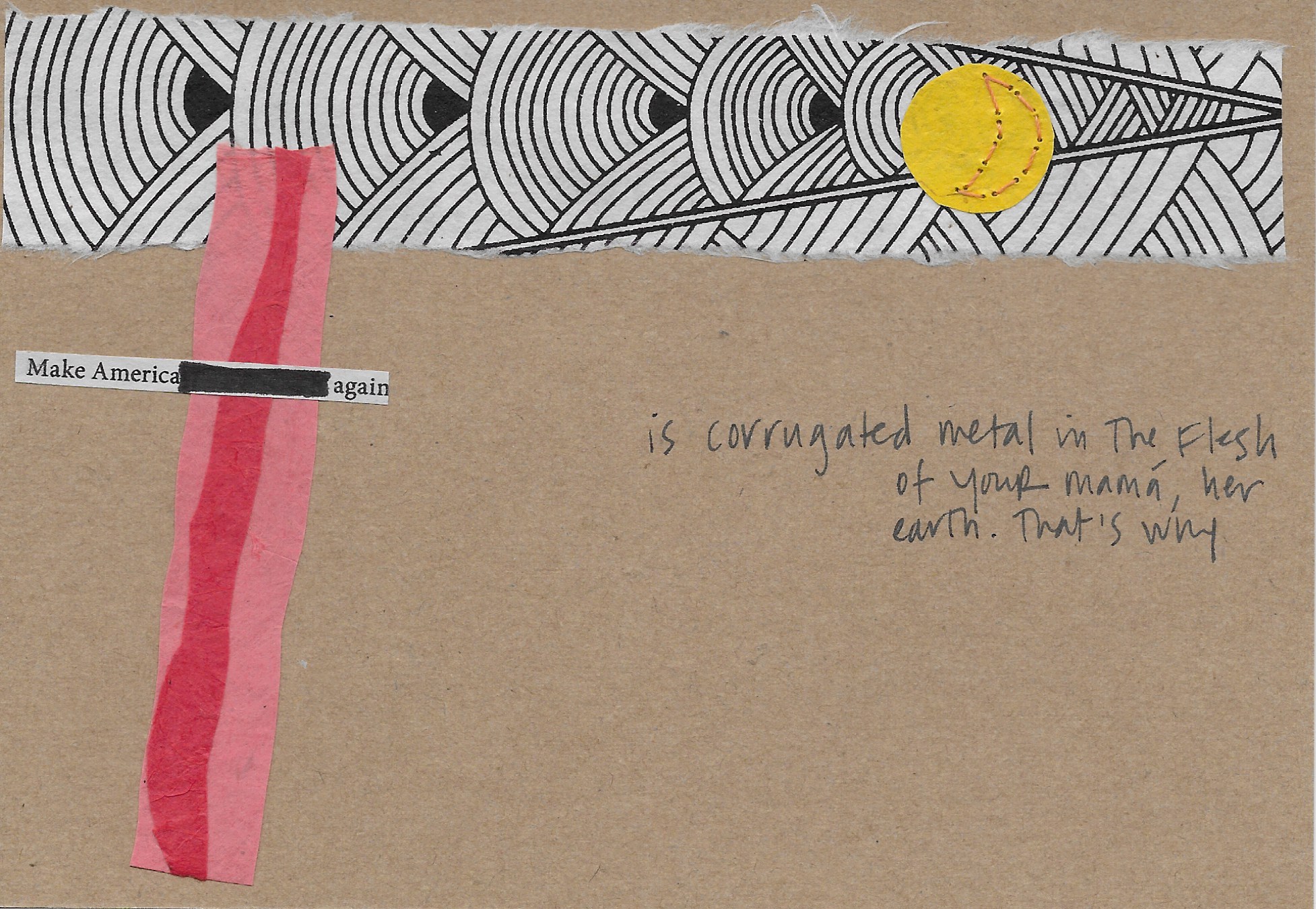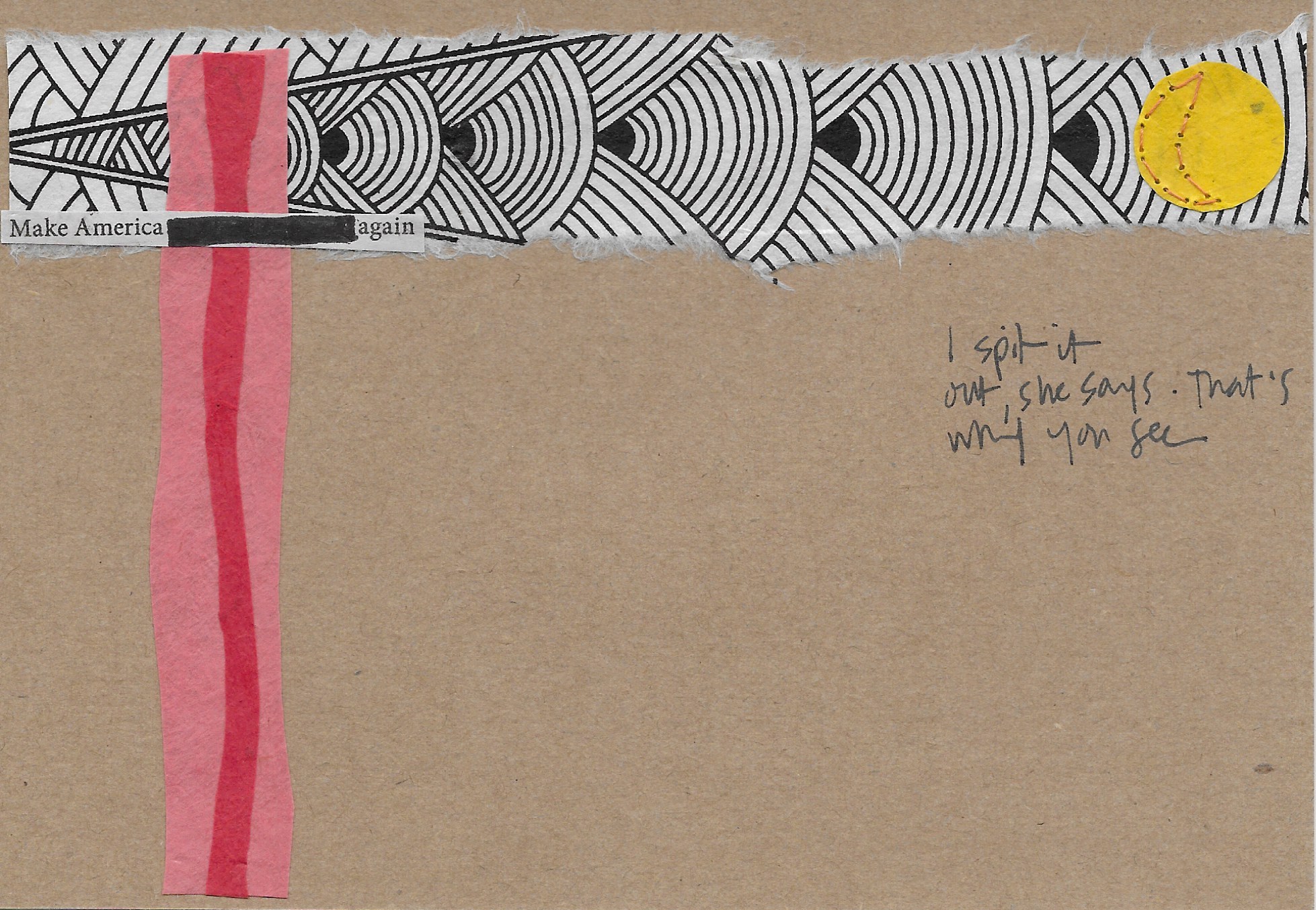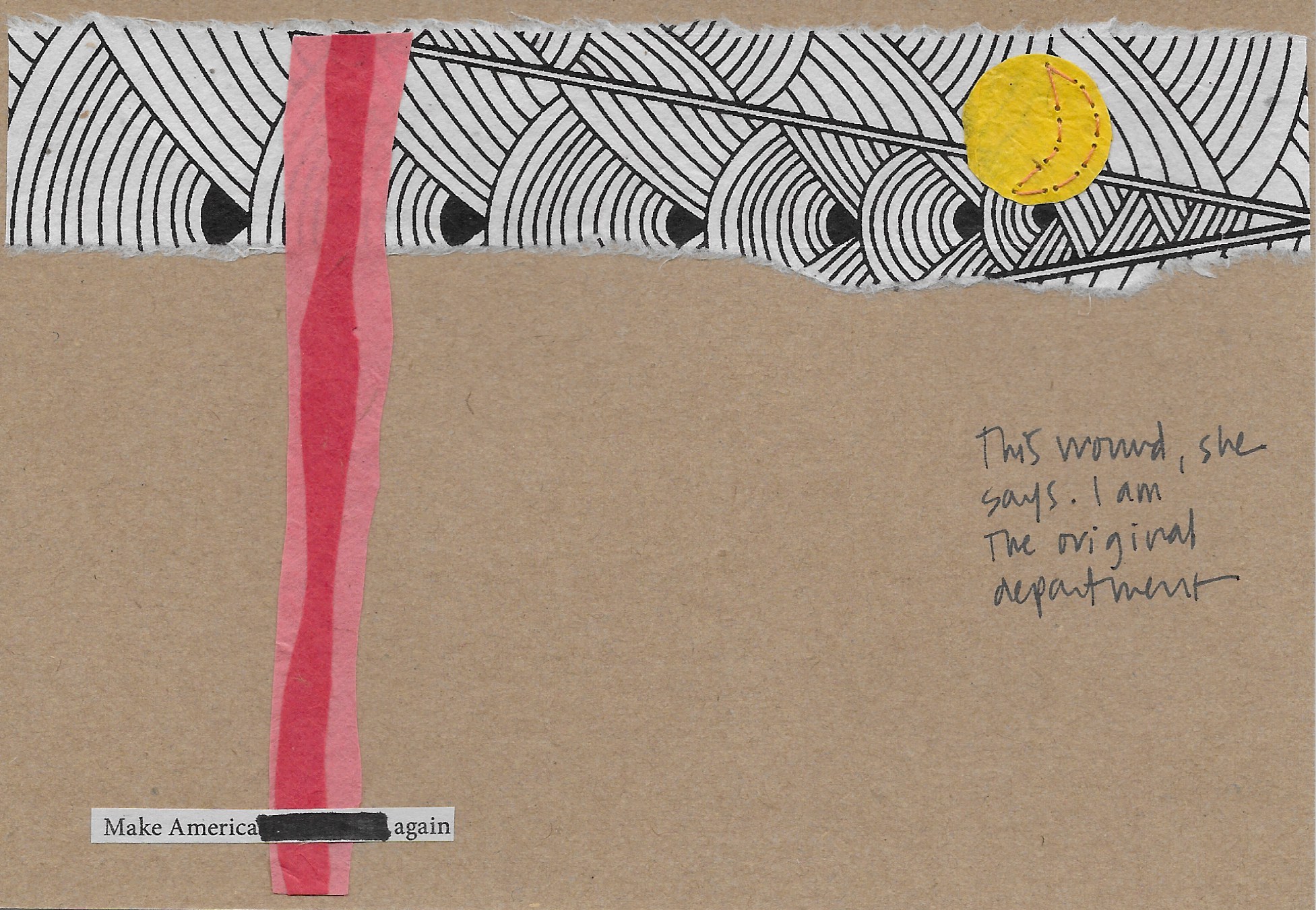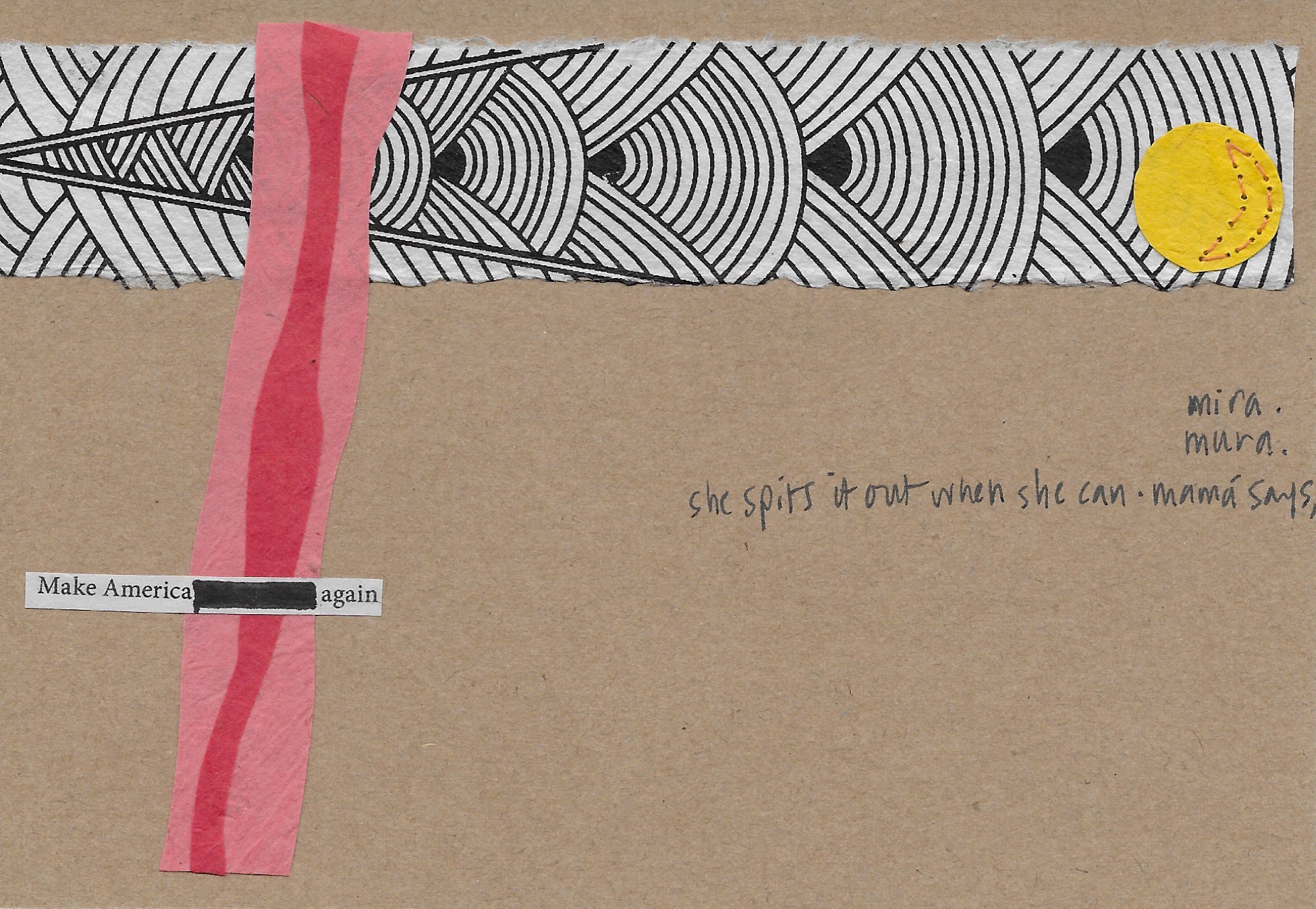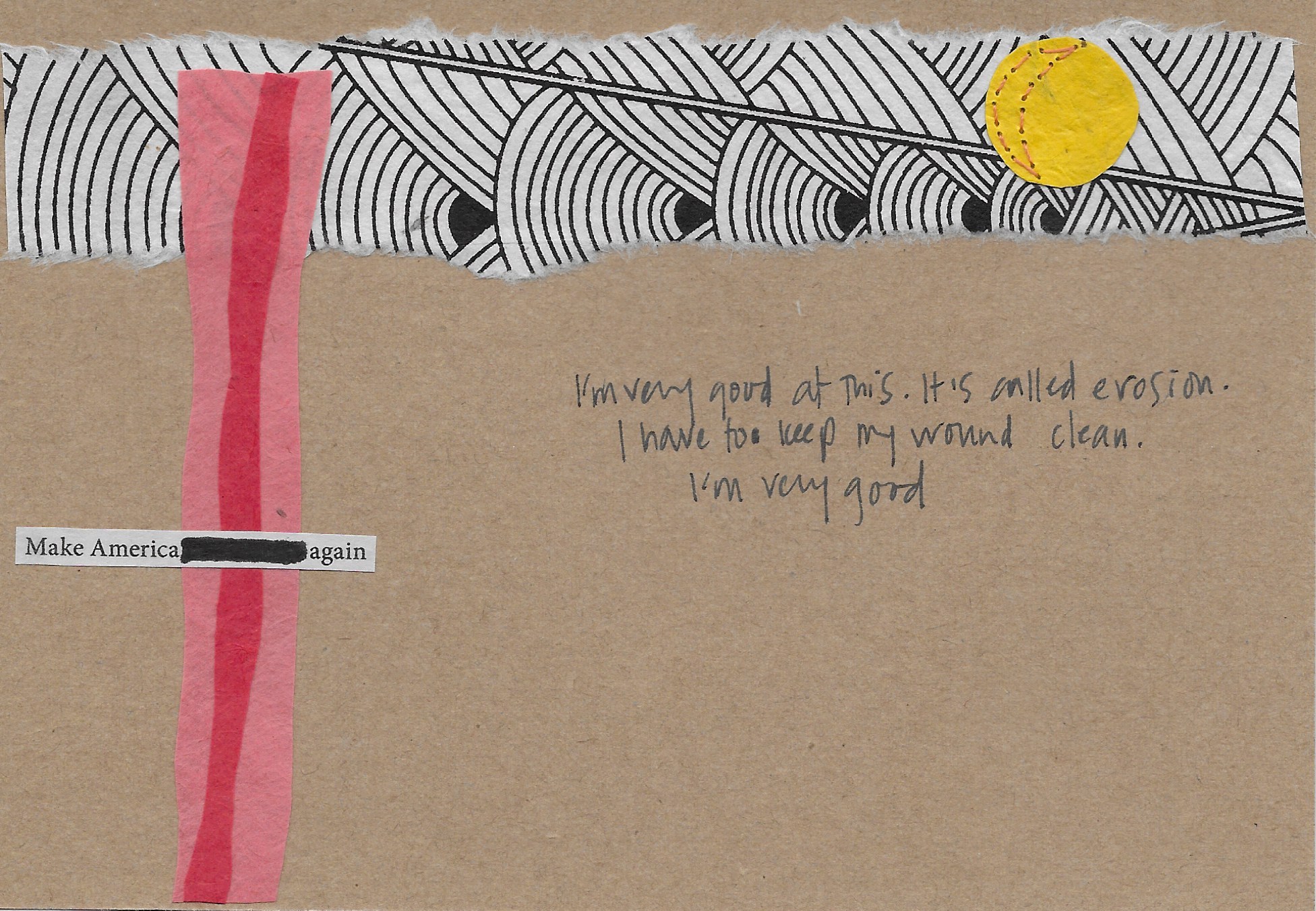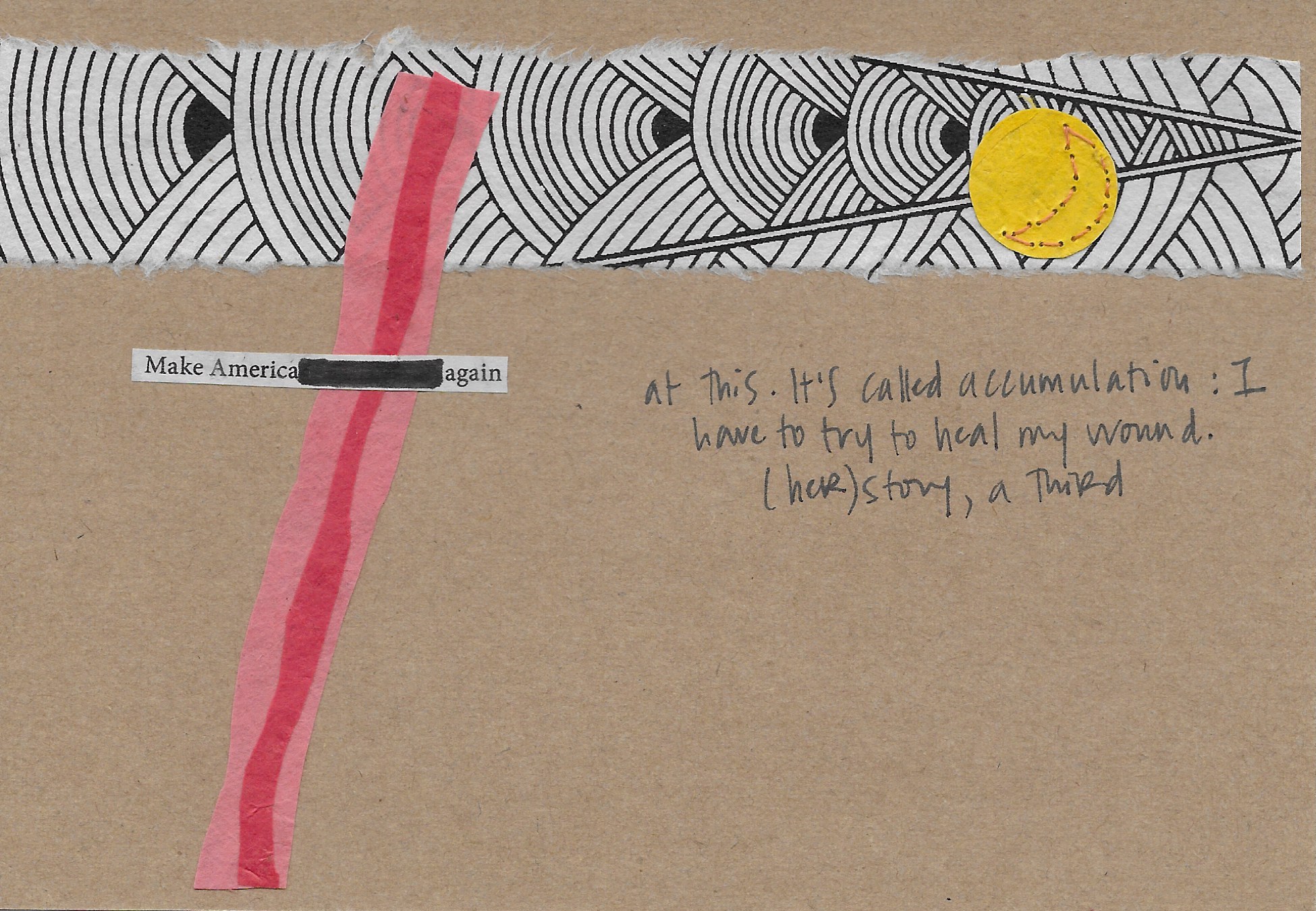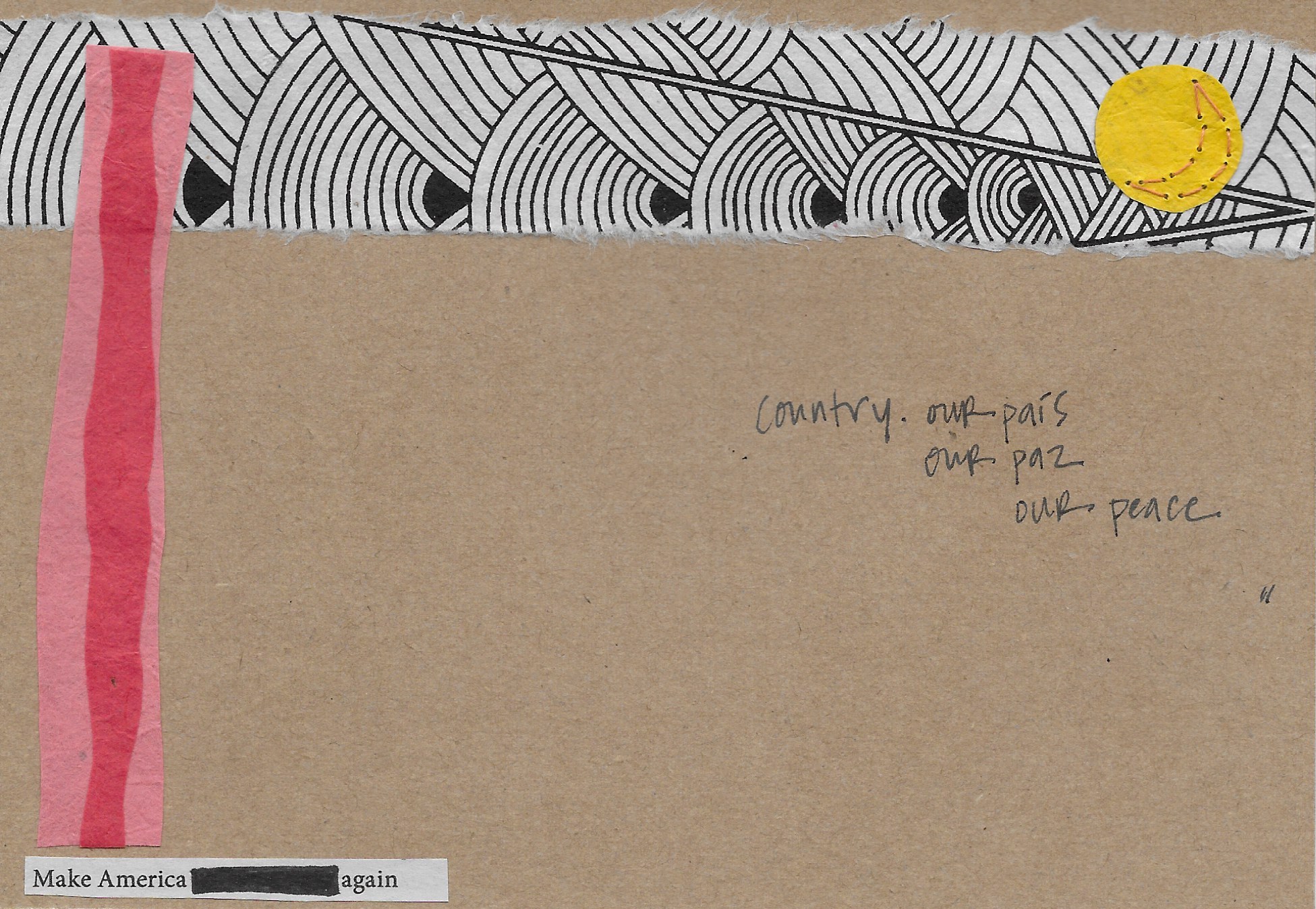15 march 2017
thank you for participating in this year's poetry postcard/postal migration project.
as Natalie Scenters-Zapico shared on Twitter this weekend, "Stop asking all Latinx poets about the border. Not every Latinx poet is required to share their experiences about the border. // However there are border poets who find this space rich, not as a metaphor, but as a literal space. // The border as a literal space that holds their childhood, a crossing, an othering as existence." I don't wan't to be asked about the border right now. I don't want to be told, "Oh, you're from El Paso? Aren't you afraid to live there? I hope they build that wall so that the high crime can go down in your city." (this is just one comment of many.) yet despite this, the voice of this project keeps insisting.
while working on this project at Vermont Studio Center earlier this month, my mind lingered over the land as a literal body. years ago, while flying back home from a trip to Phoenix, I recall thinking that the border fence looked like an open wound. I wrote a poem about it a few weeks later. this was a couple of years before I discovered the work of Gloria Anzaldúa. reading her work for the first time–& in my thirties no less–was a revelation. in the opening chapter to Borderlands/La Frontera: The New Mestiza Anzaldúa writes:
"The U.S.-Mexican border es una herida abierta where the Third World grates against the first and bleeds. And before a scab forms it hemorrhages again, the lifeblood of two worlds merging to form a third country–a border culture. Borders are set up to define the places that are safe and unsafe, to distinguish us from them. A border is a dividing line, a narrow strip along a steep edge. A borderland is a vague and undetermined place created by the emotional residue of an unnatural boundary. It is in a constant state of transition."
this project builds upon her work. in thinking about the border fence/wall & earth as a body, it is apparent that what people are willing to do to the body they live on people are willing to do to bodies they live among. (I hesitate to use the word "we" here.) I also find myself wondering if people knew there was already a fence/wall in place on the U.S.-Mexico border when they celebrated & championed DJT for his election promise, or did people forget–or choose to forget–about its existence, for as History reveals time & again, people often choose to forget about the violence they perpetrate & condone (in)voluntarily against other bodies. privilege is about convenience in this way.
this poetry project reveals the story of a wound & is part of what I now realize will grow into a larger one :
(her)ida, a (her)story
Can we look into the wound? - Cecilia Vicuña, "Language is Migrant"
I mail the postcards today, the same day people across the U.S. plan to participate in #TheIdesofTrump by mailing postcards to DJT that publicly express one's opposition to him & his presidency outfit. I mail these poetry postcards in opposition to DJT & his wall. I deeply hope this work honors Gloria Anzaldúa & her work as well as Cecilia Vicuña (& her translator Rosa Alcalá) whose work echoes within my body, always. I deeply hope this work honors my ancestors, who crossed the El Paso border to work & support their families. I deeply hope this work honors everyone living along/affected by the border(s) & binaries created in this world.
I realize this project has shortcomings & is limited by my knowledge, which I am constantly working to expand. I am one person, & this is one perspective. this is an ongoing exploration. I'd love any thoughts & reading recommendations you're willing to share.
thank you.
&&&&&&&&&&&&&&&&&&&&&&&&&&&&&&&&&&&&&&
postcard note:
scale of wound/(her)ida: 1/4" = 1 mile to represent 654 total miles
poem notes:
CBP = Customs & Border Protection
links to GAO reports cited: 2/16/2017 report & 8/15/2006 report
